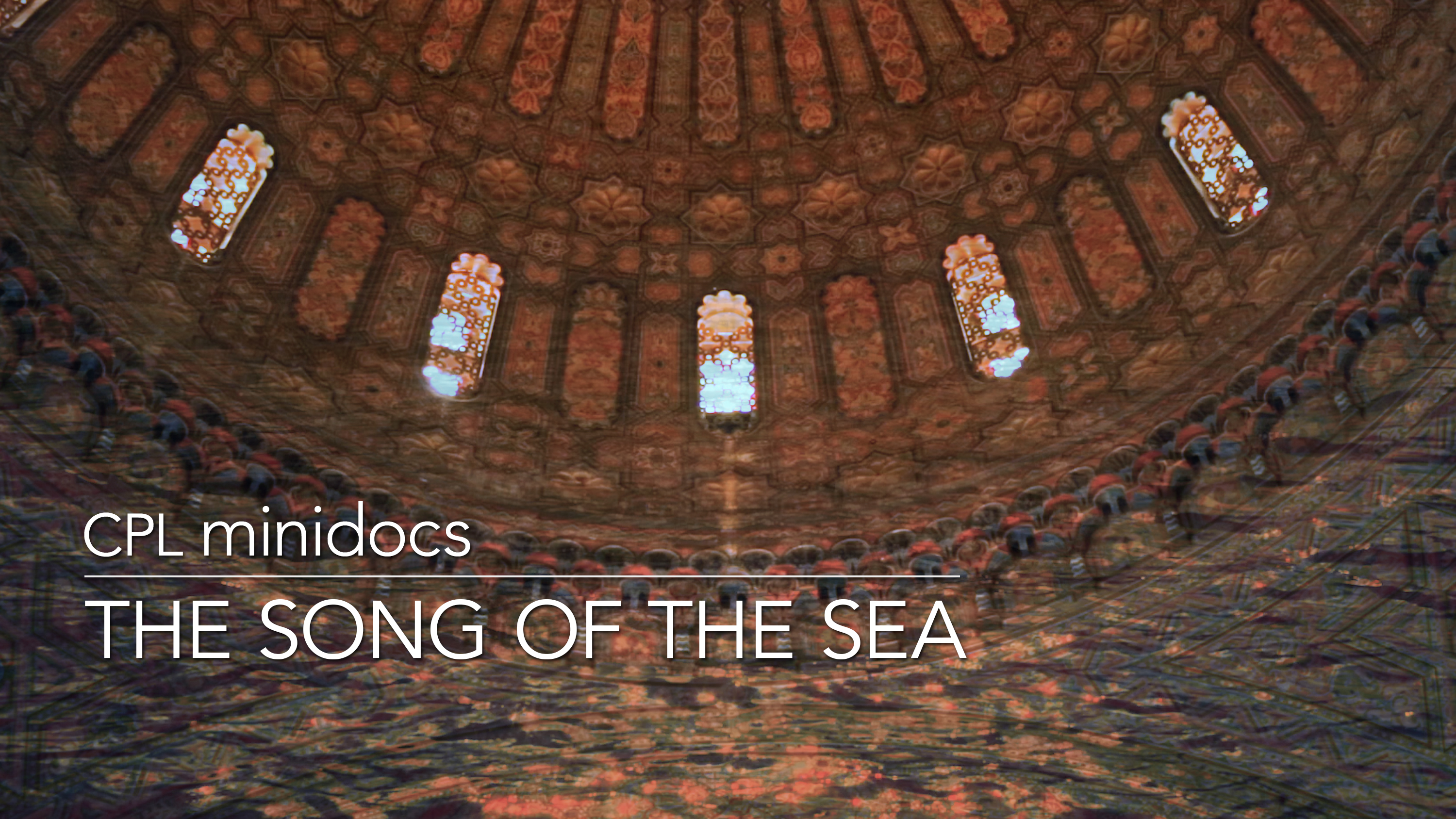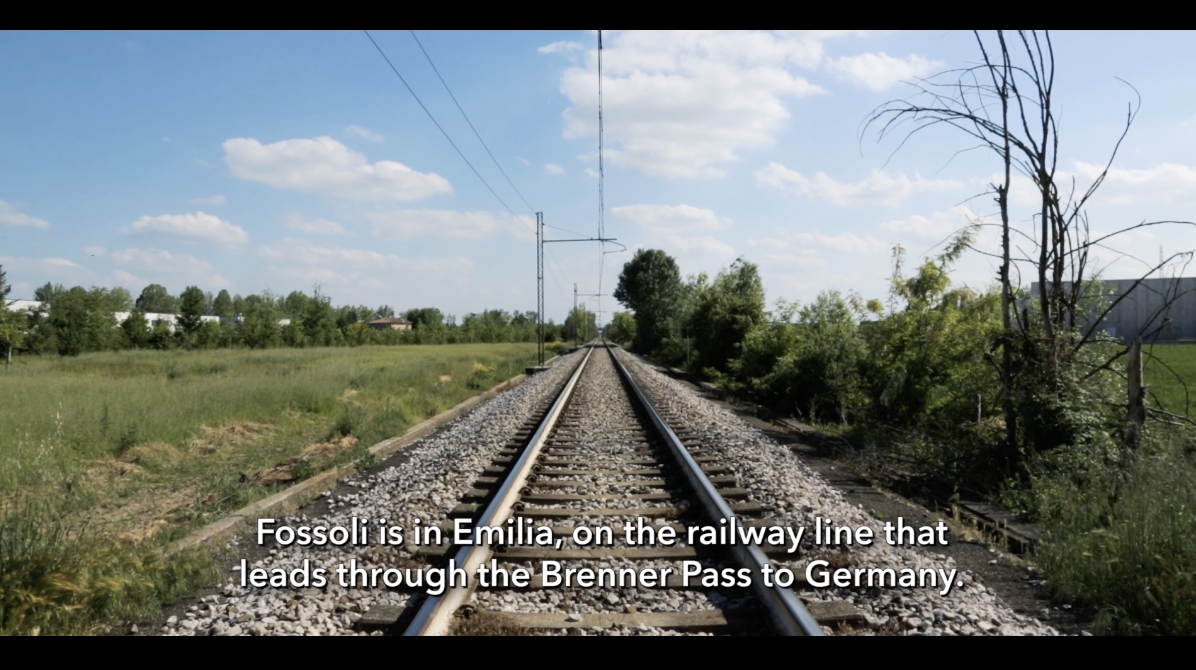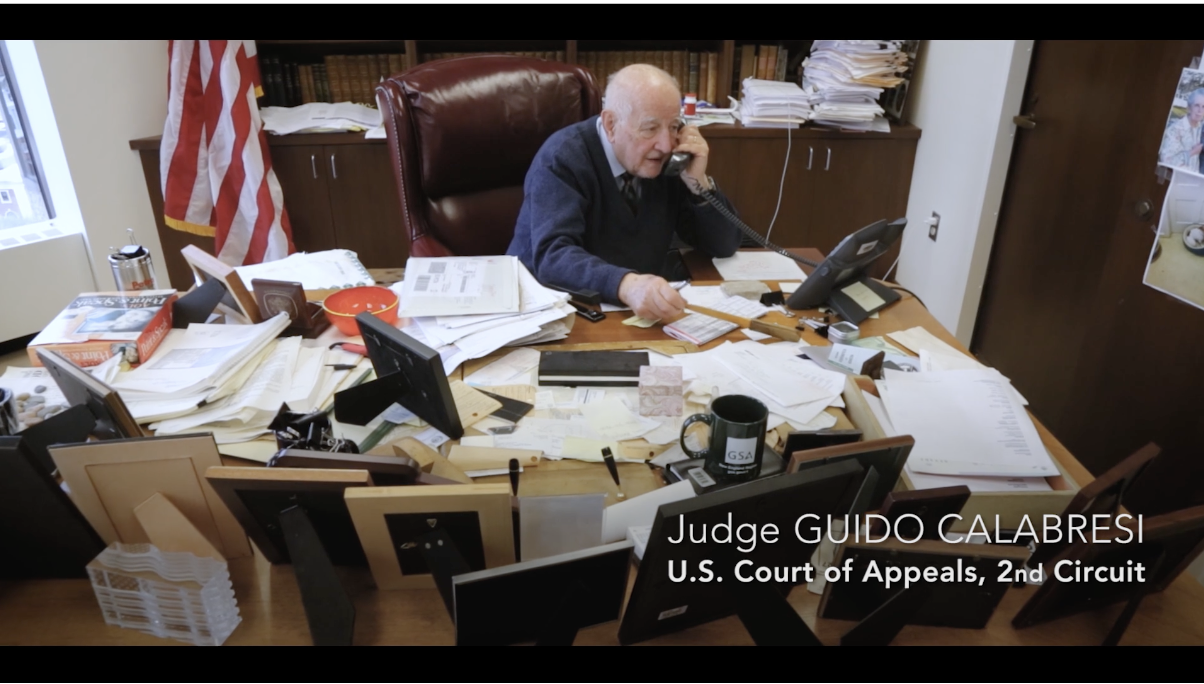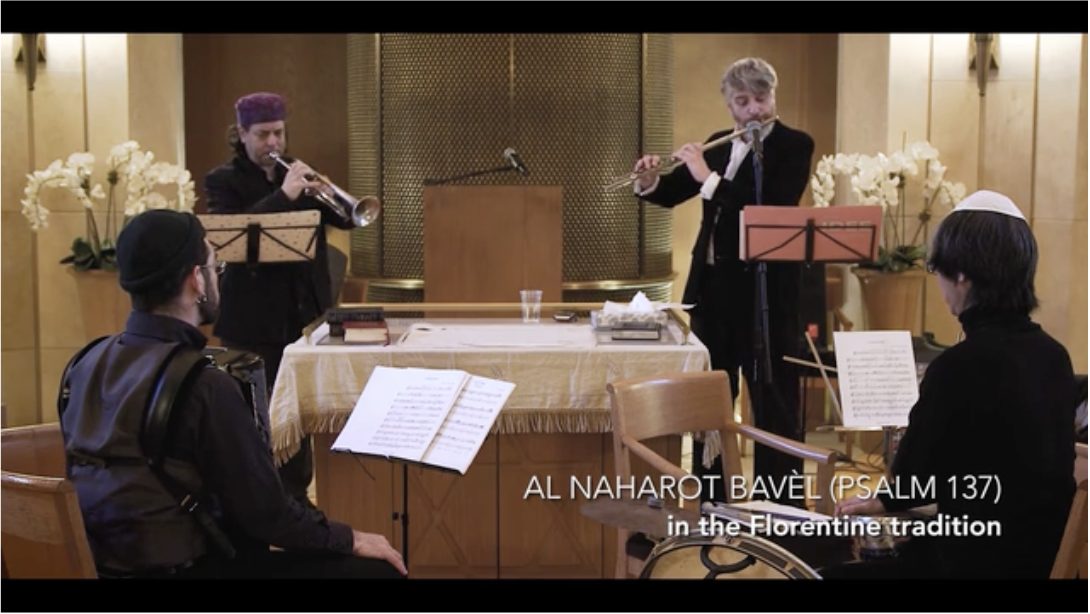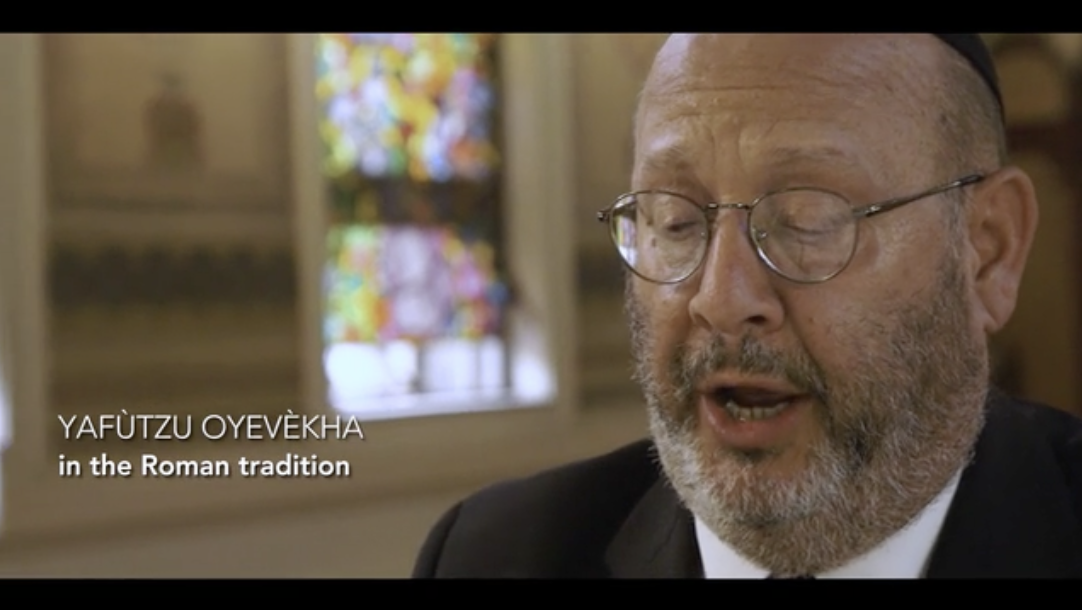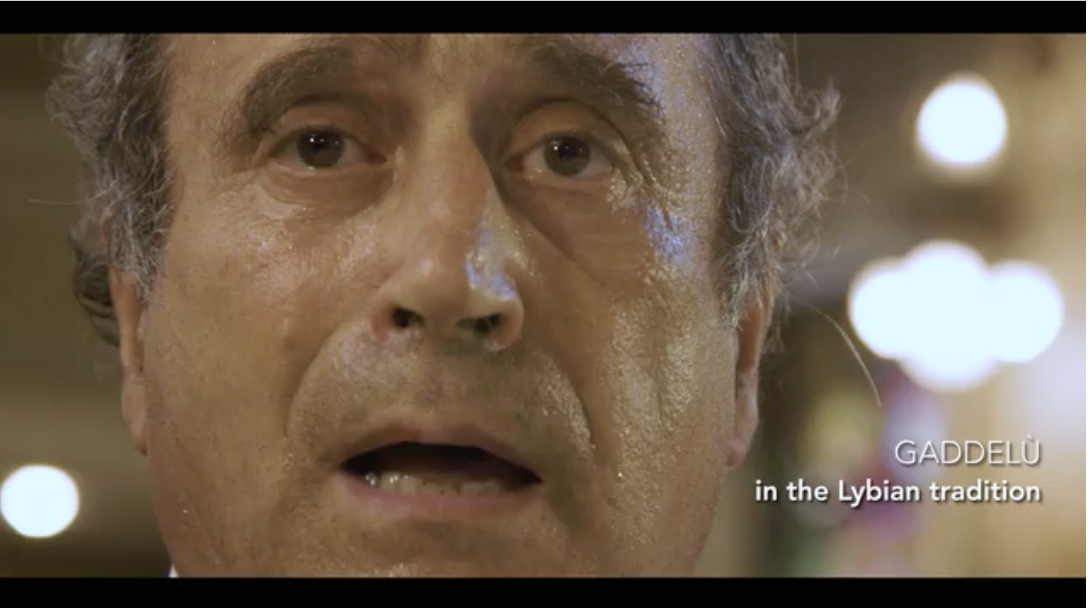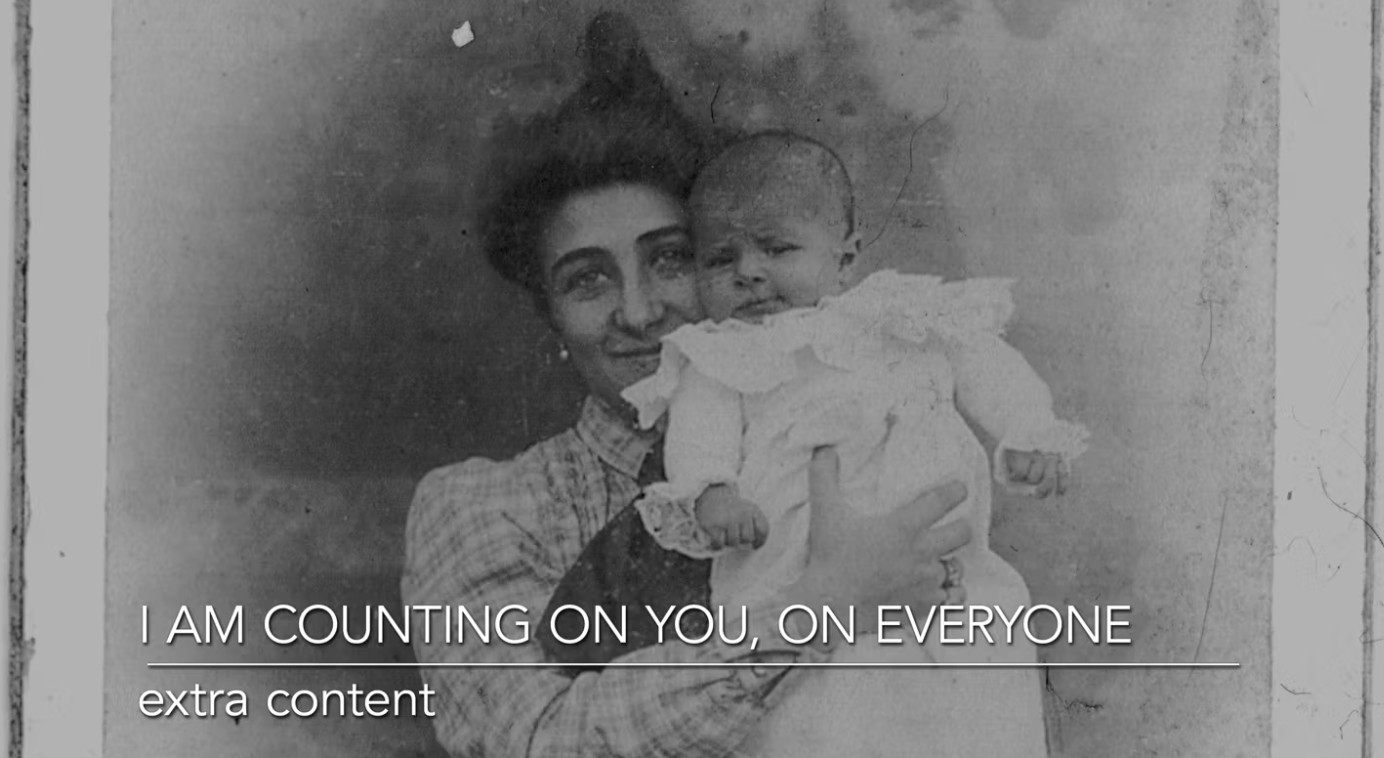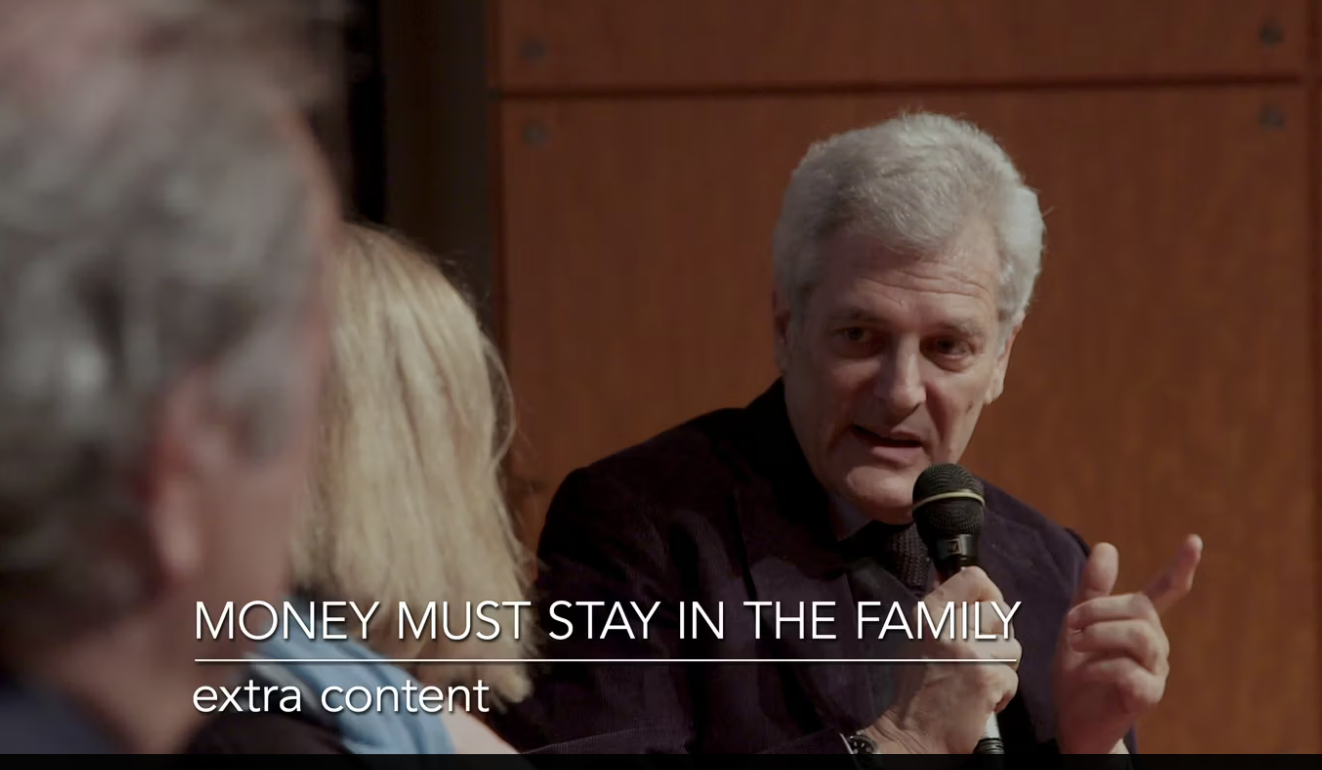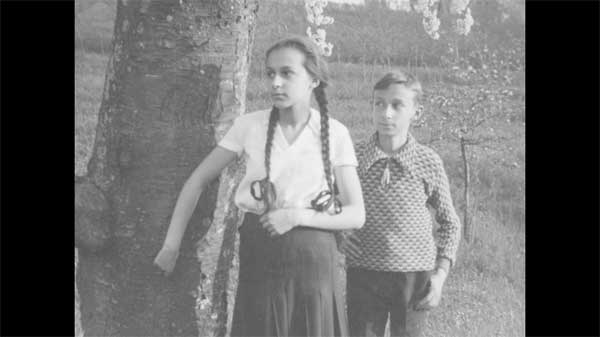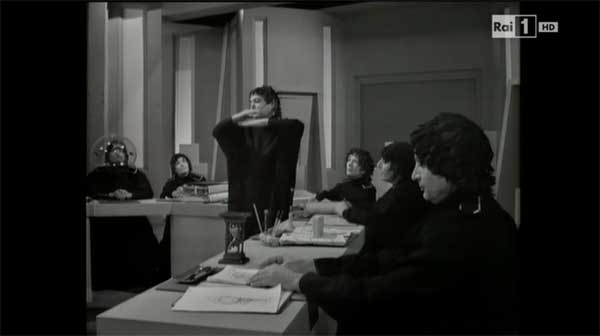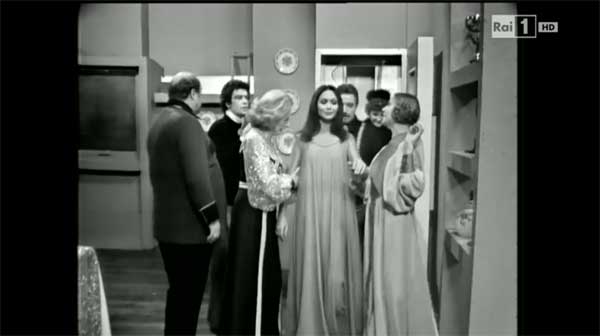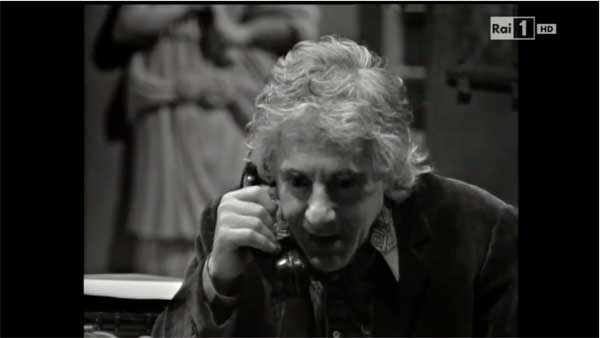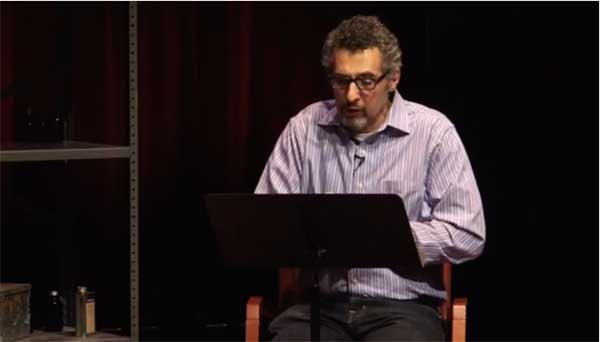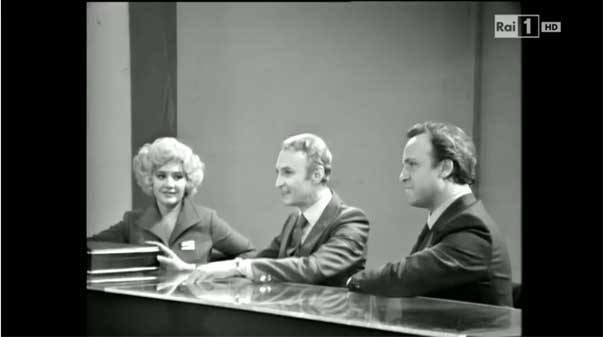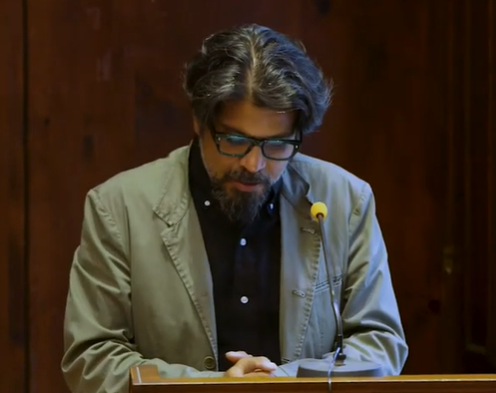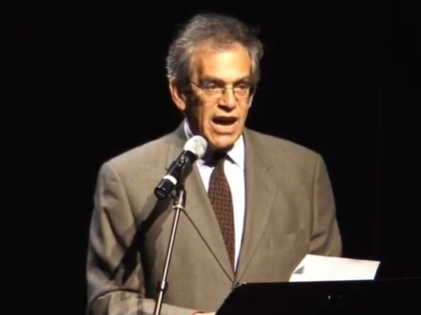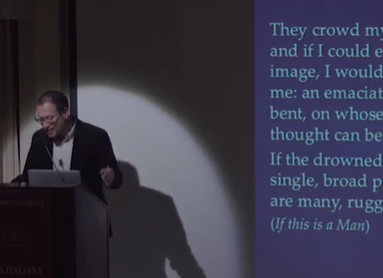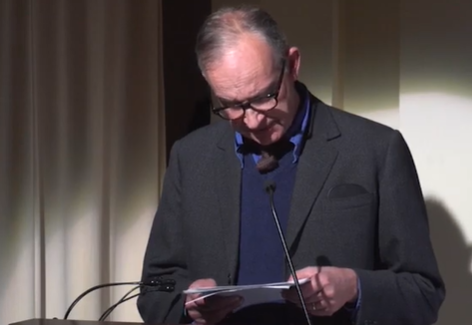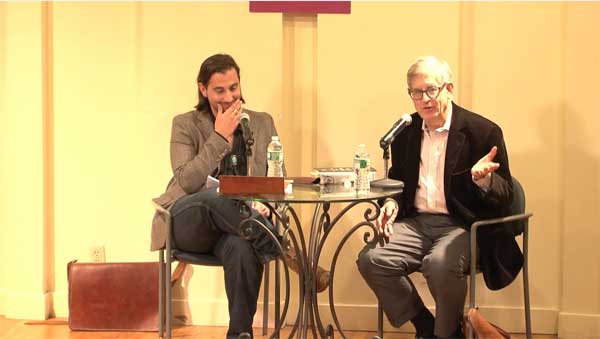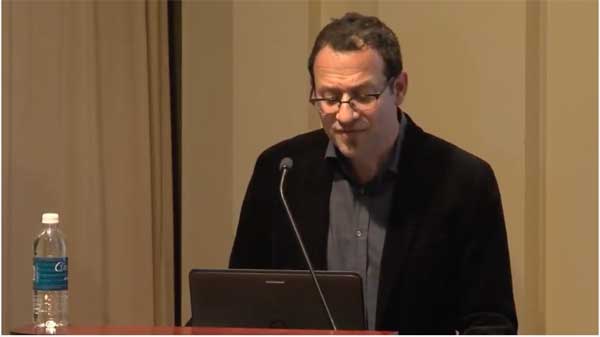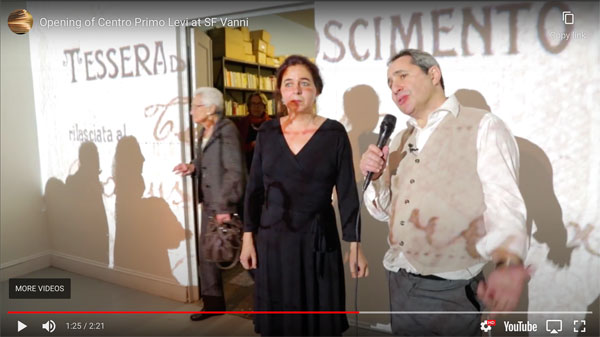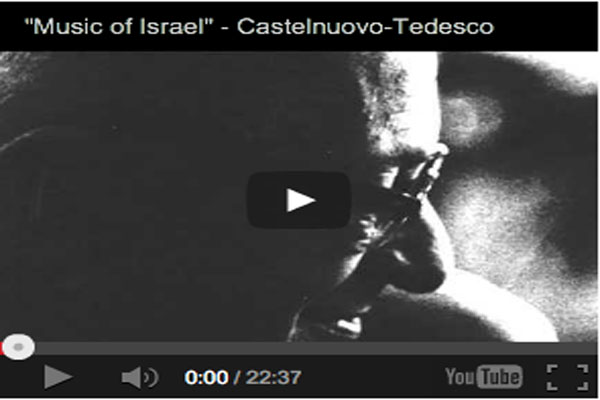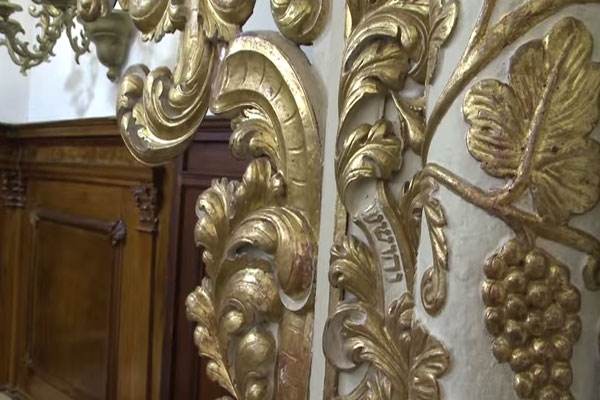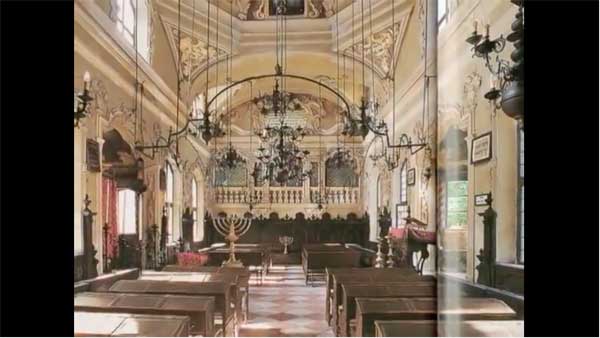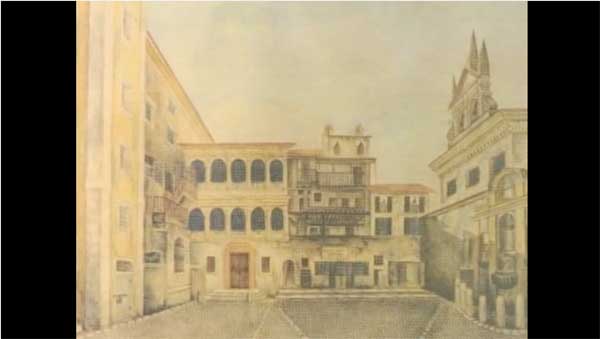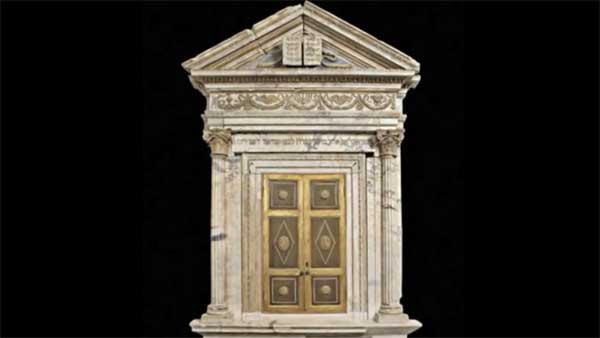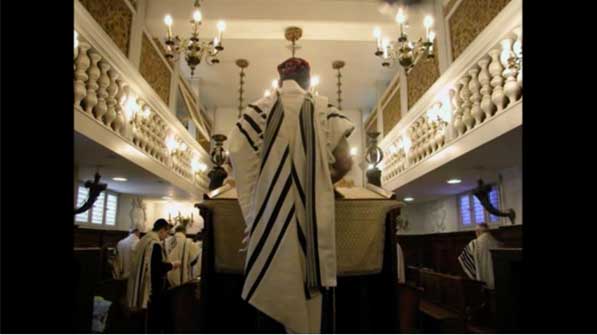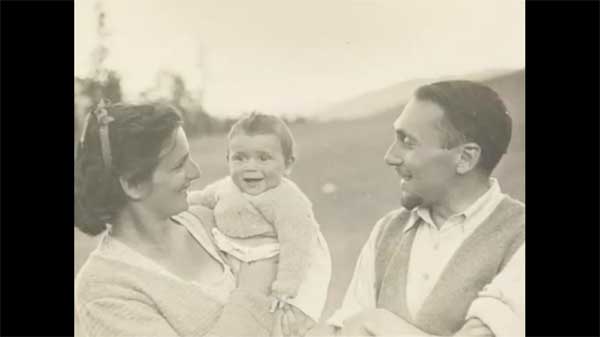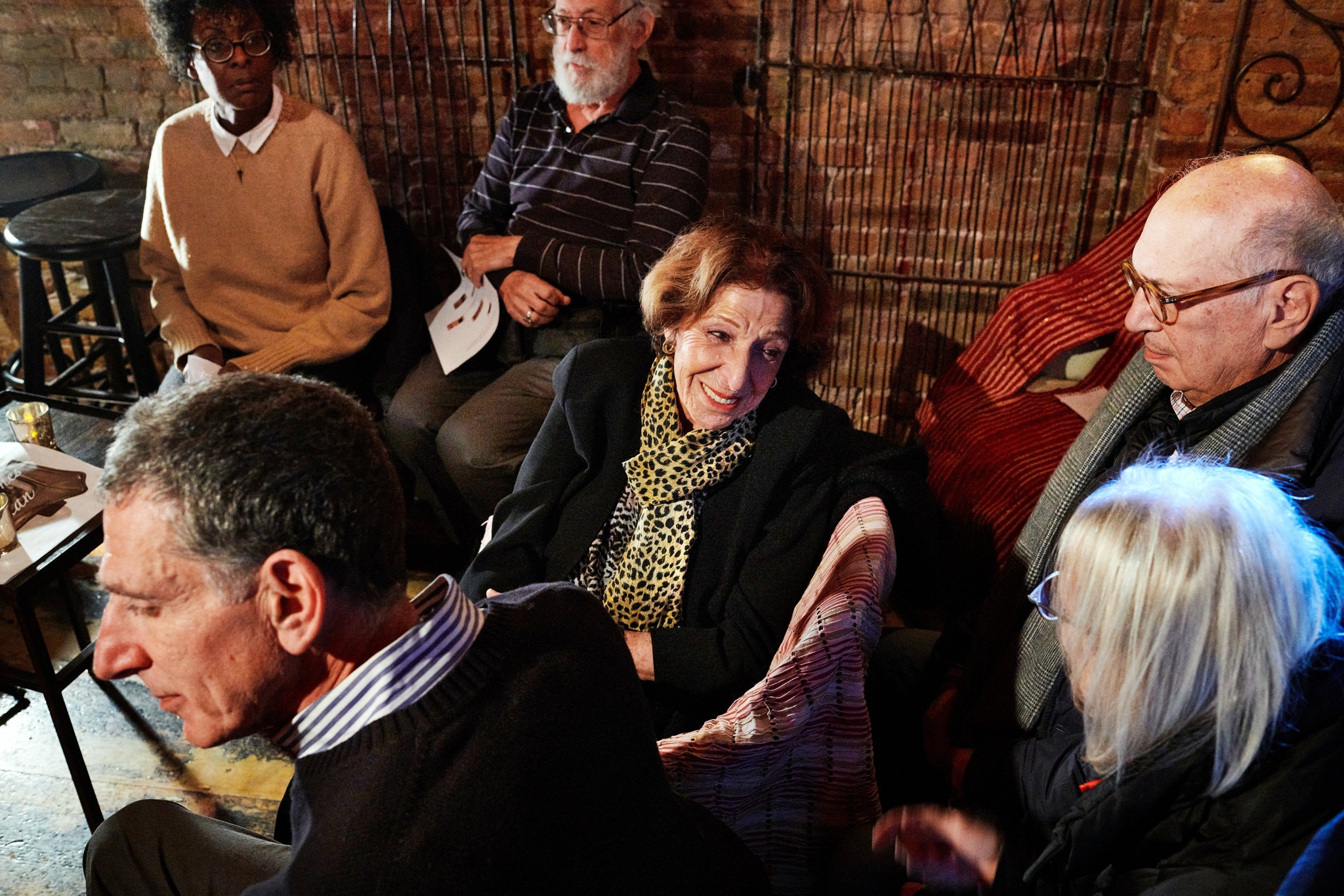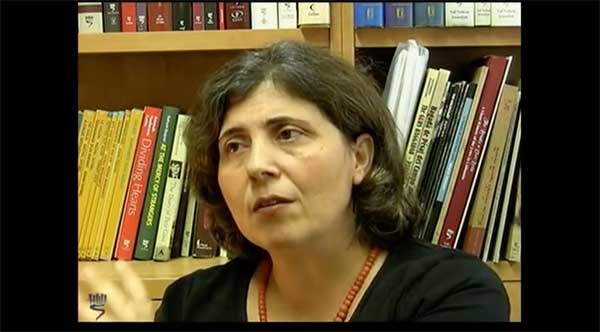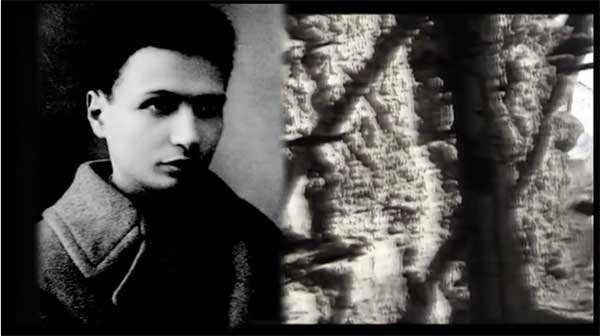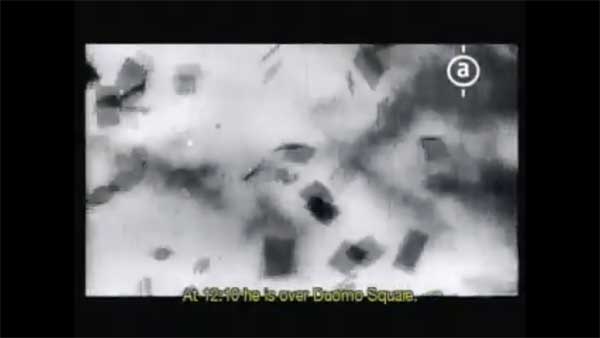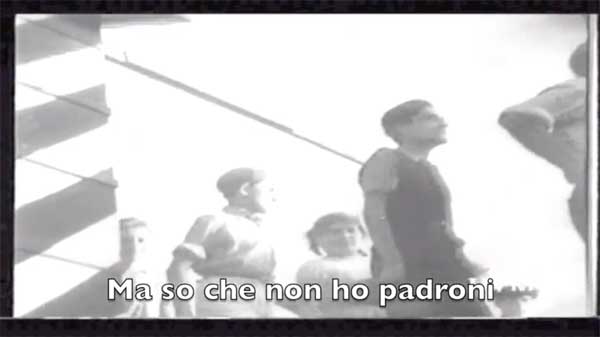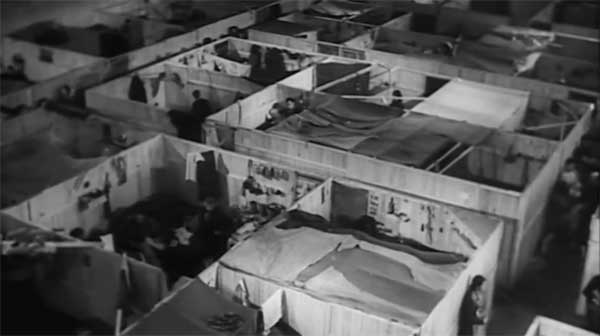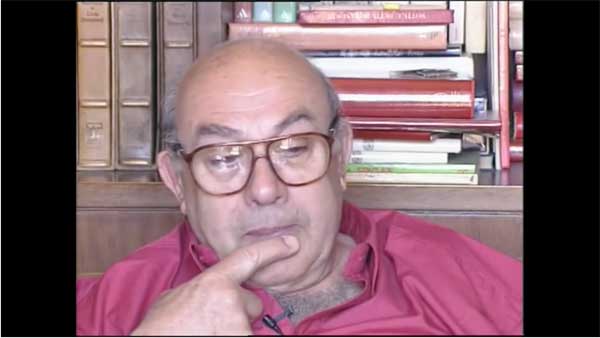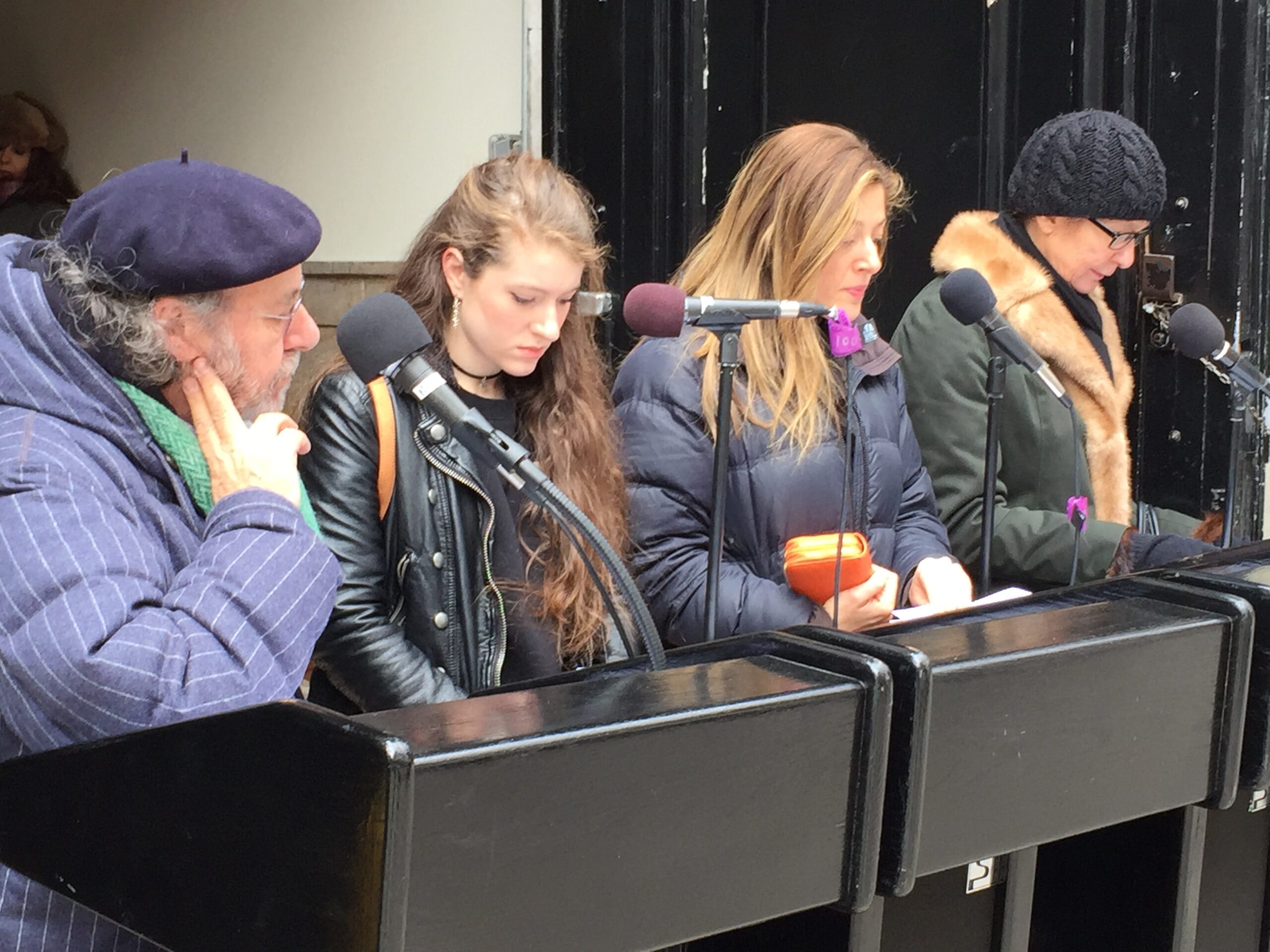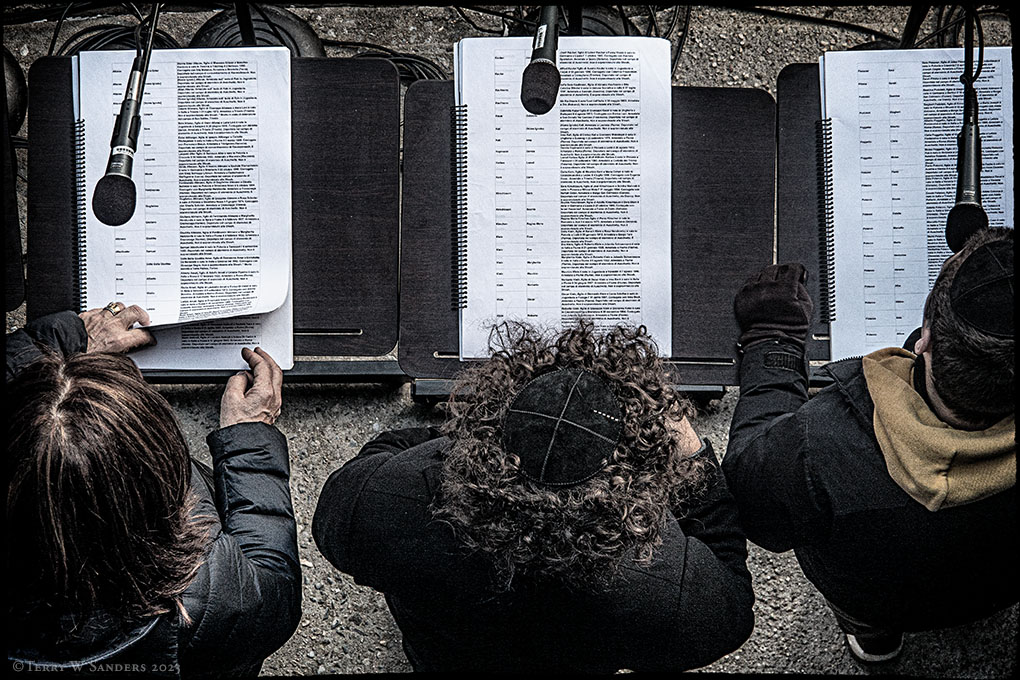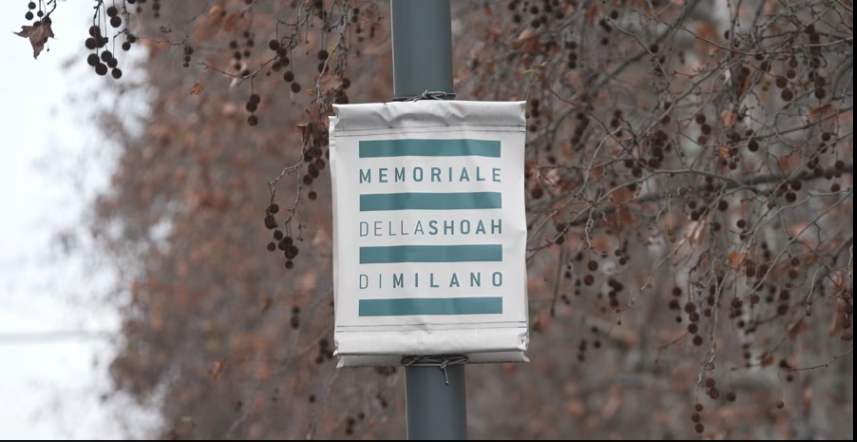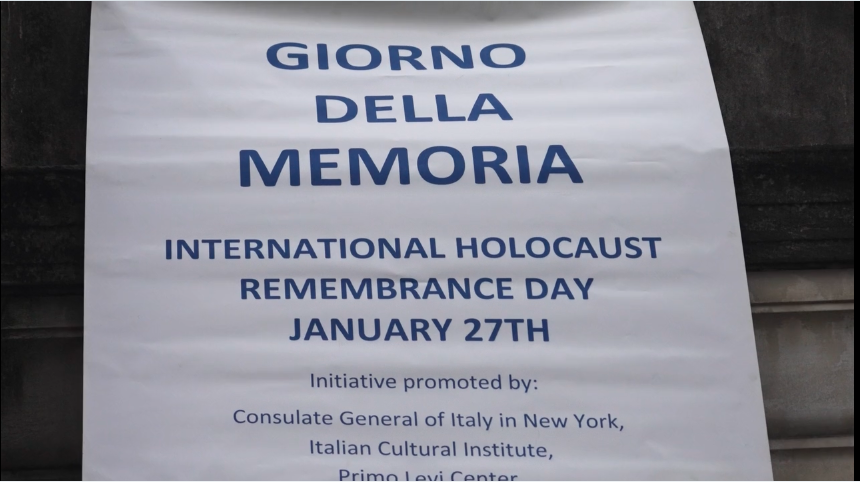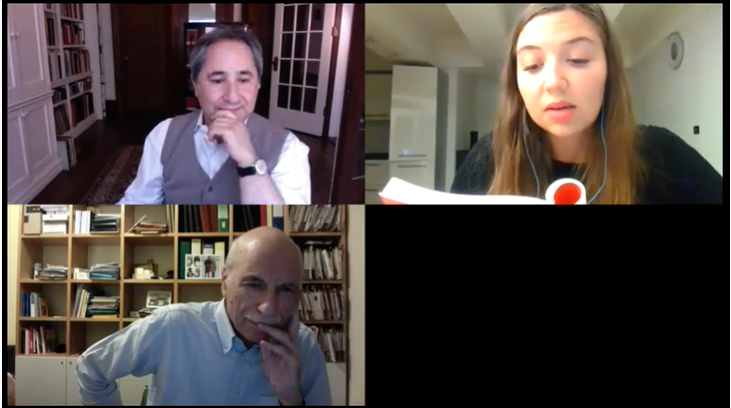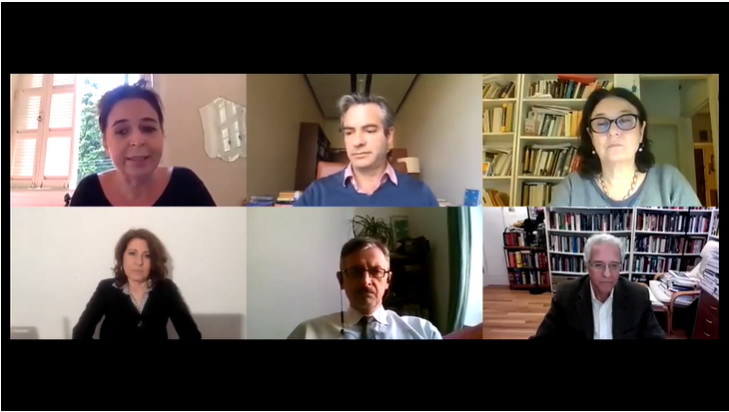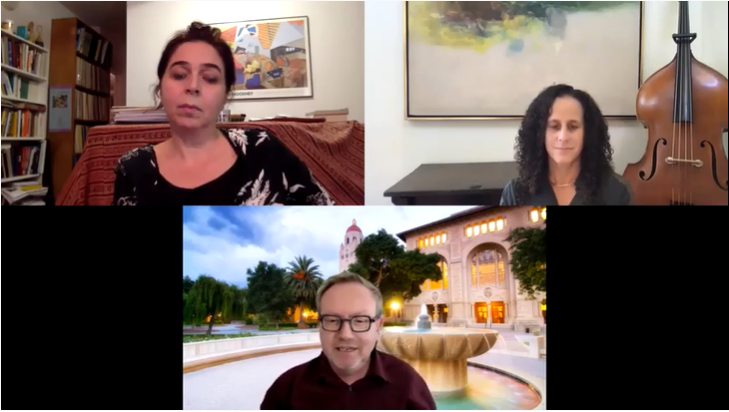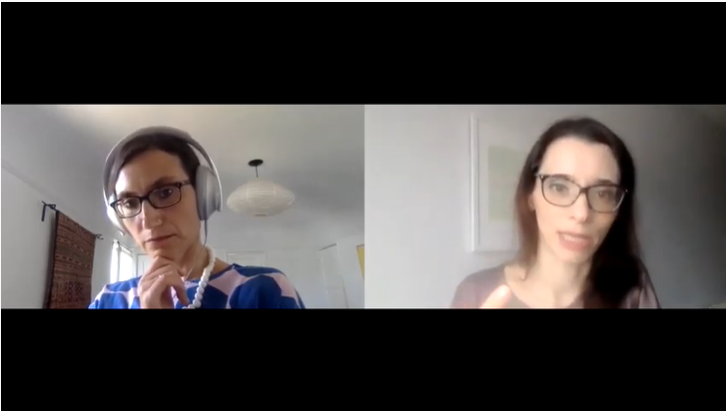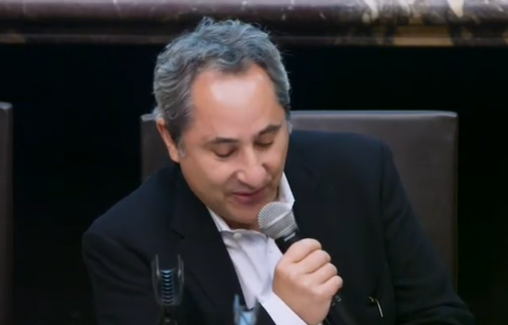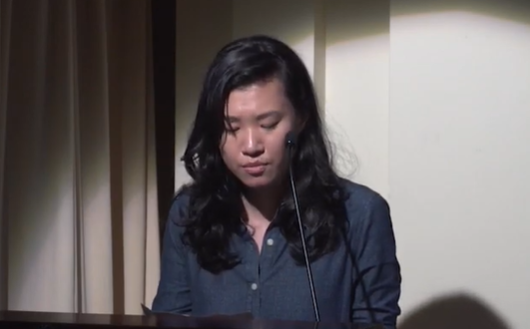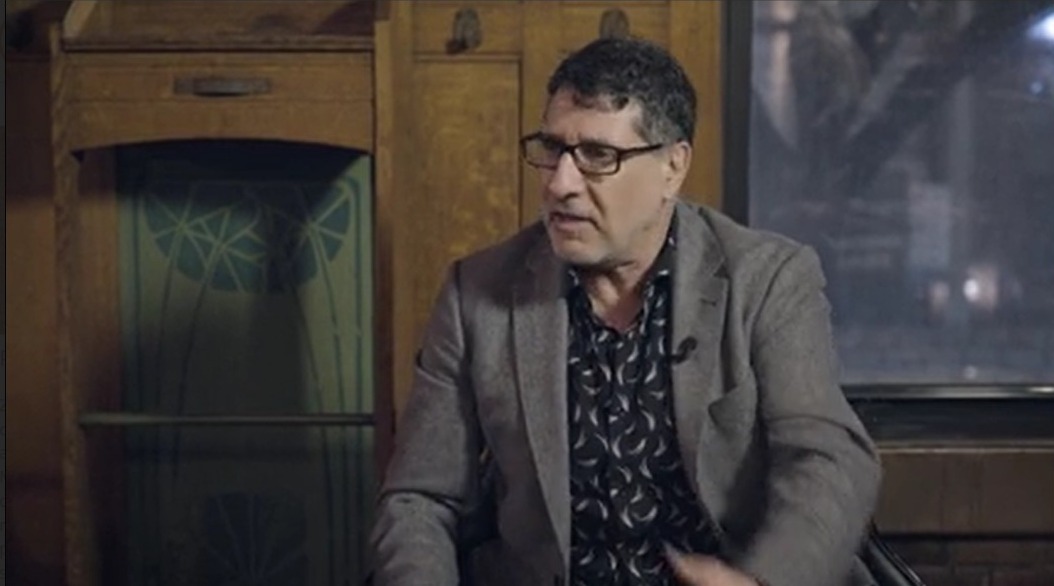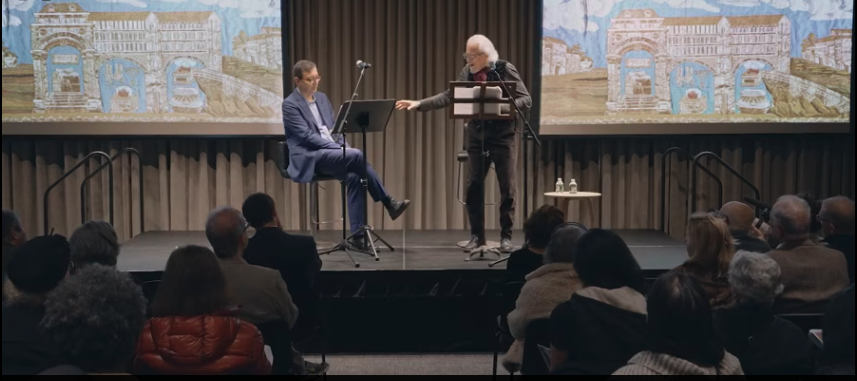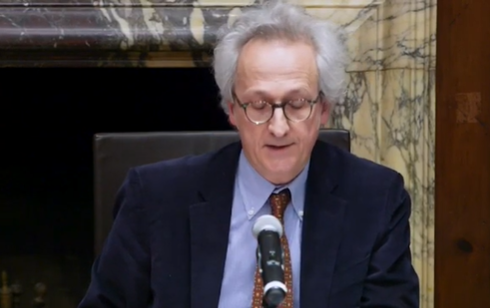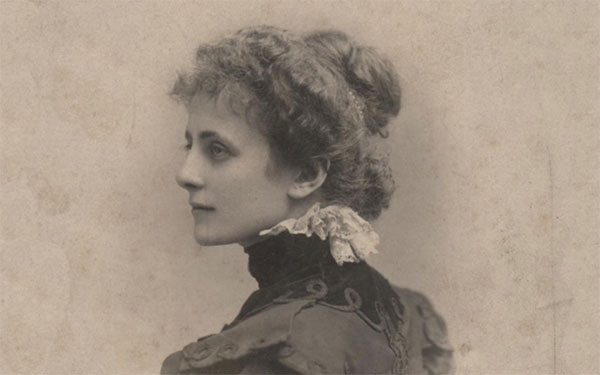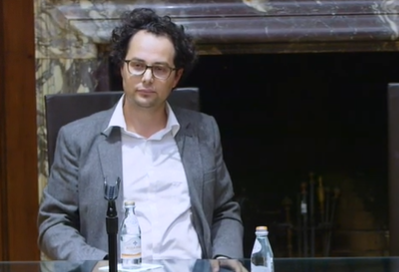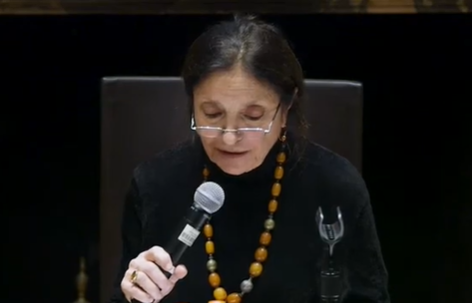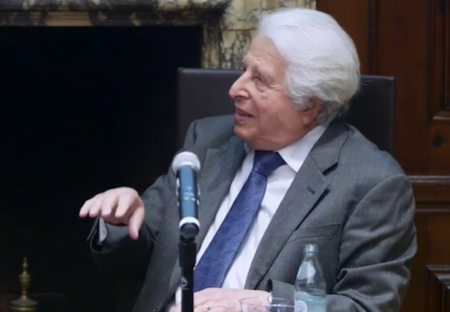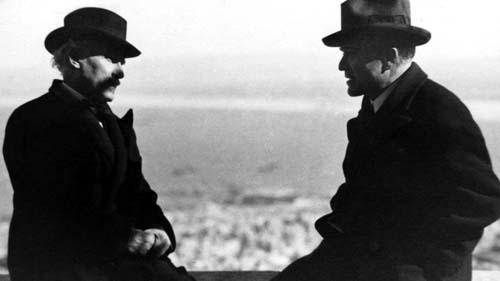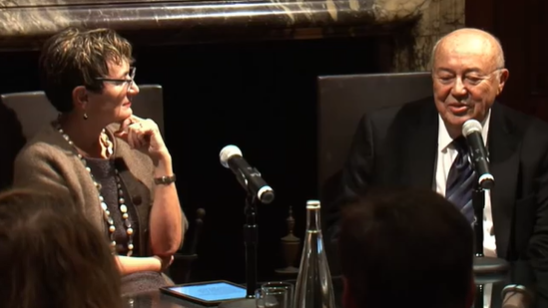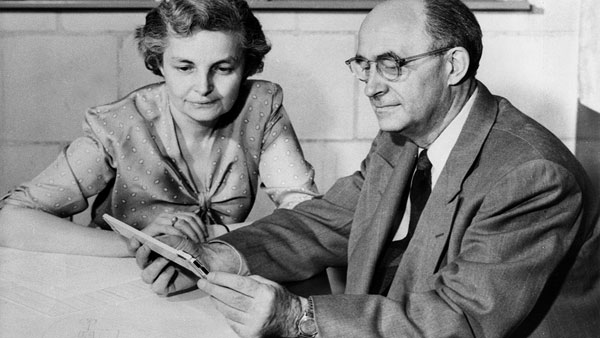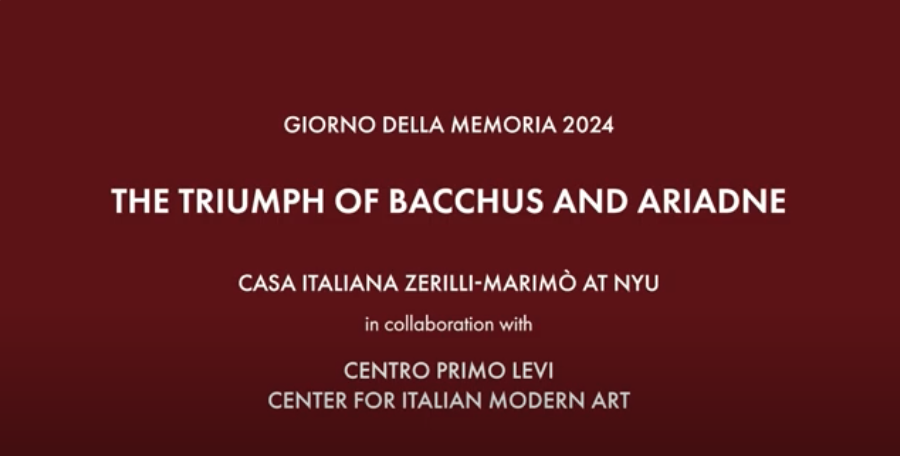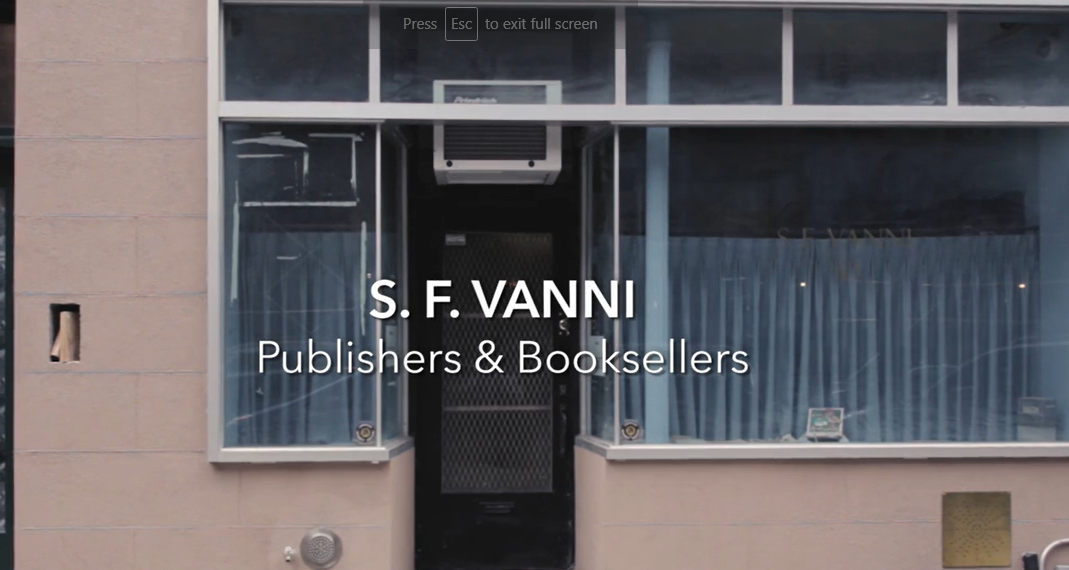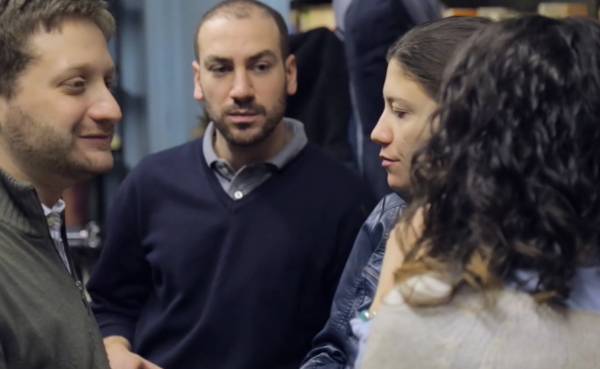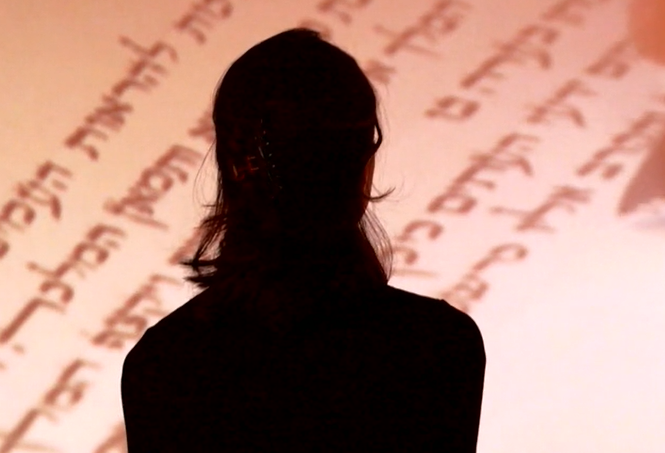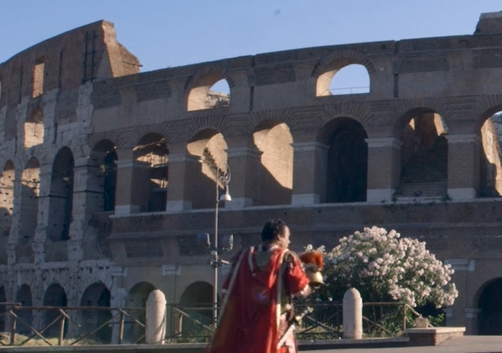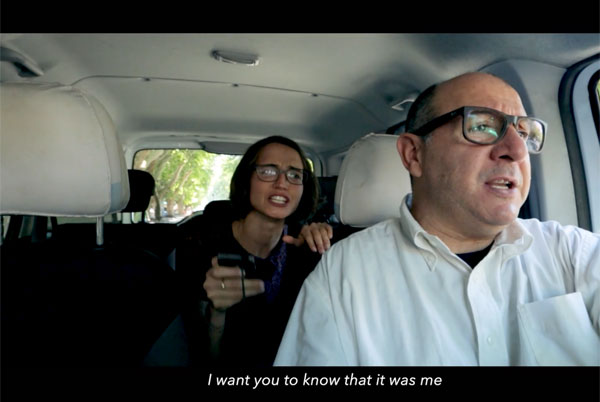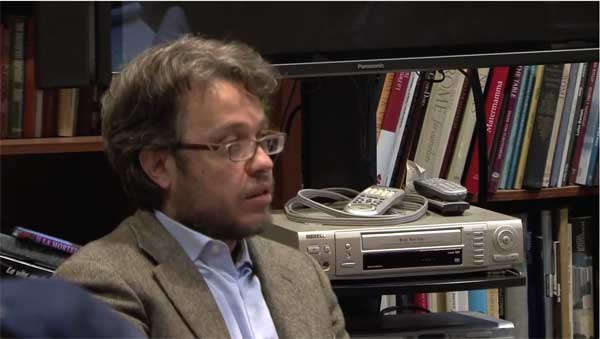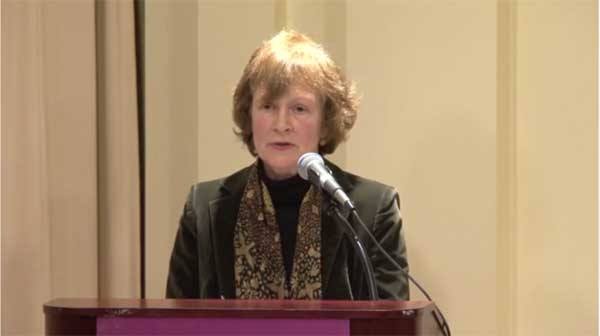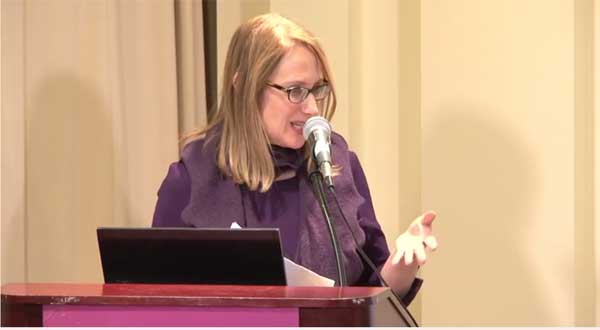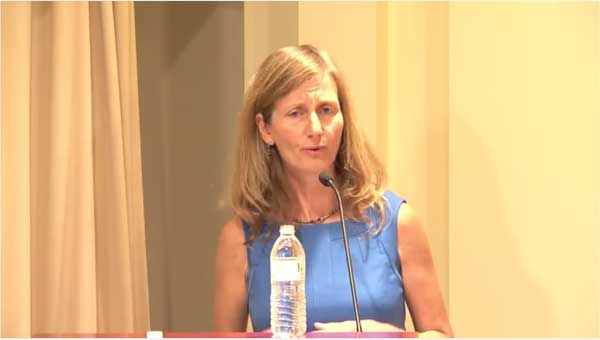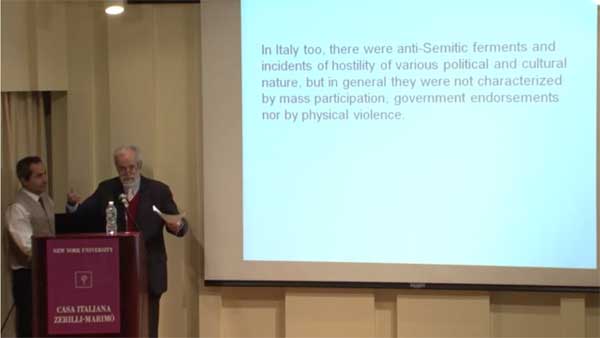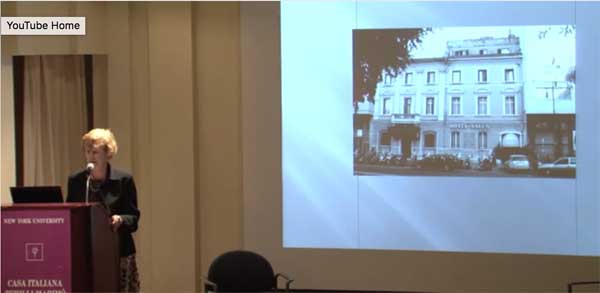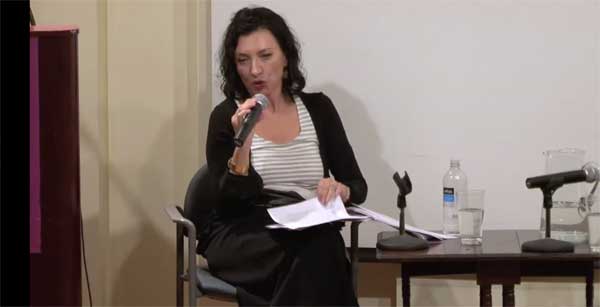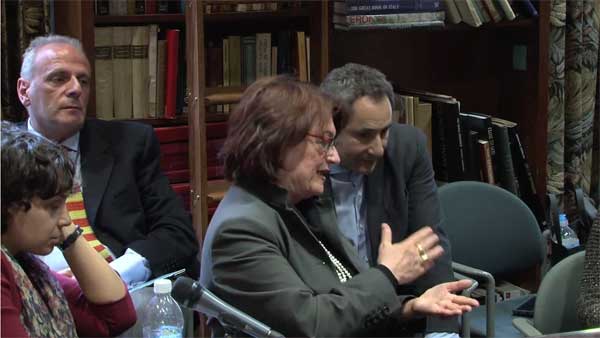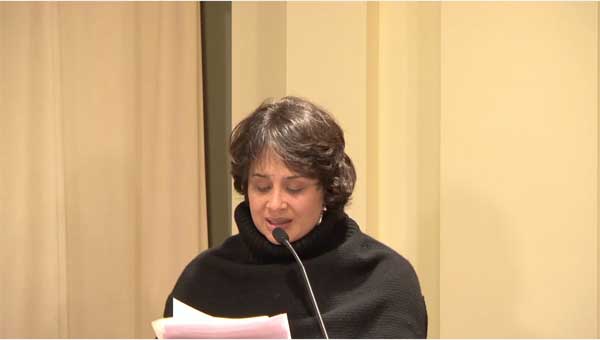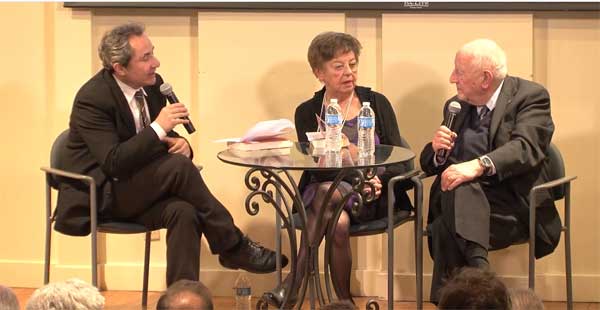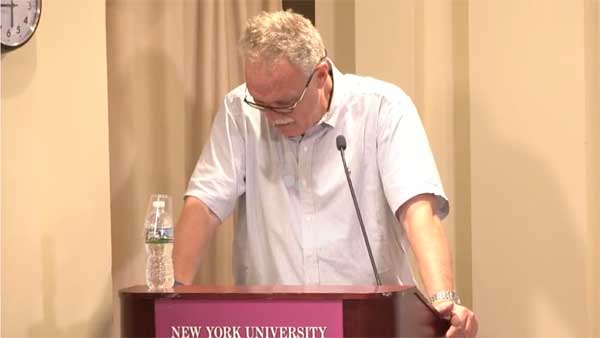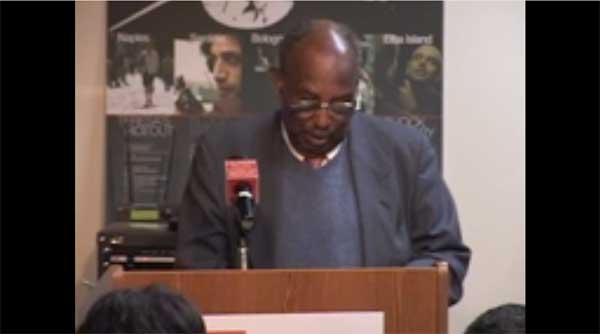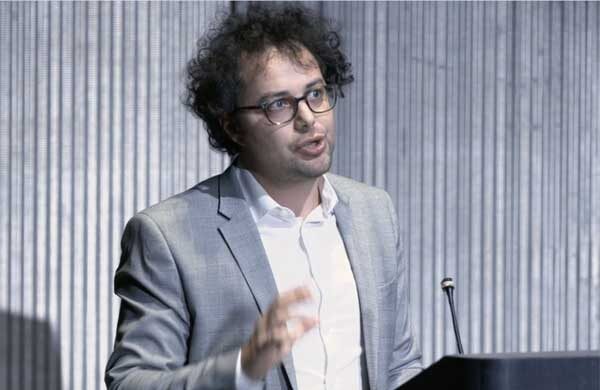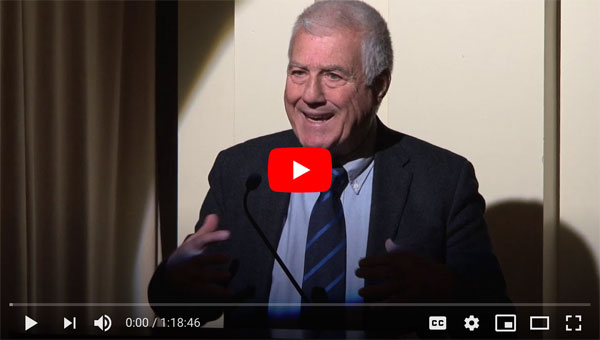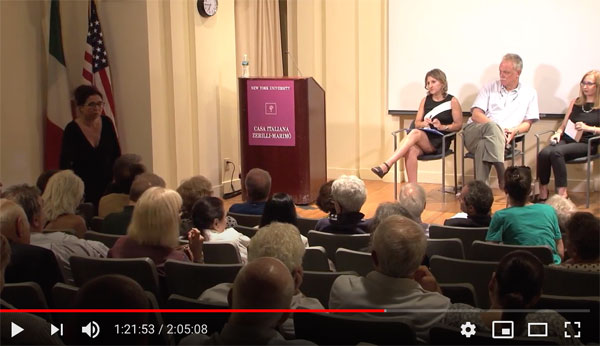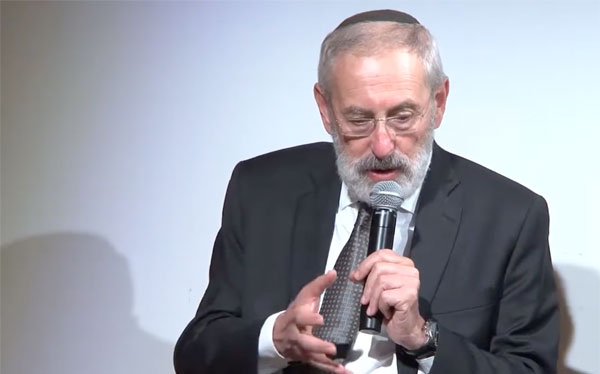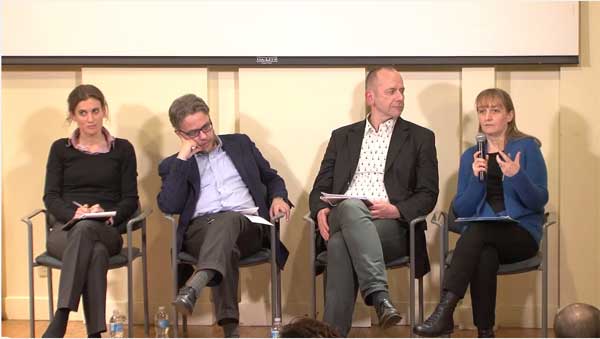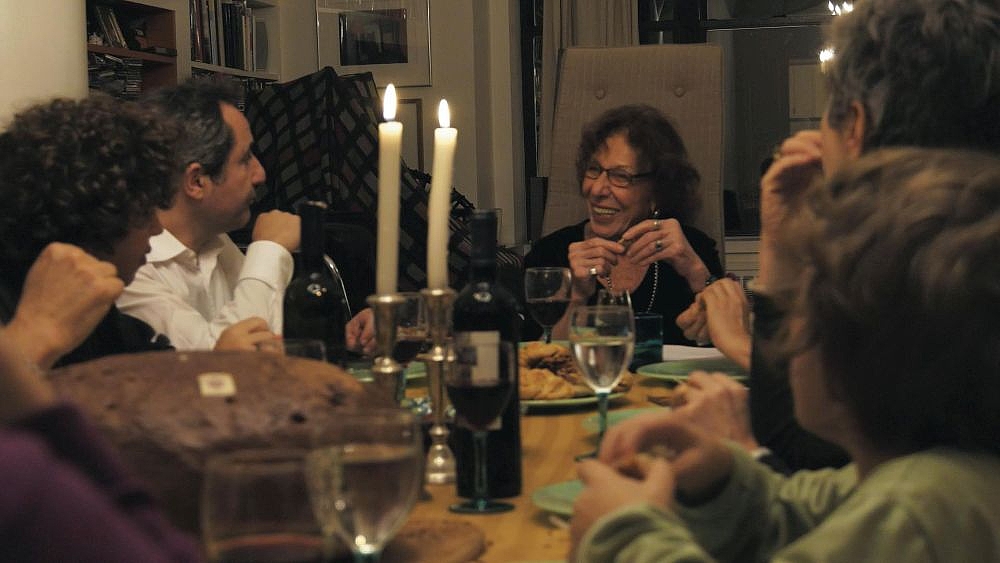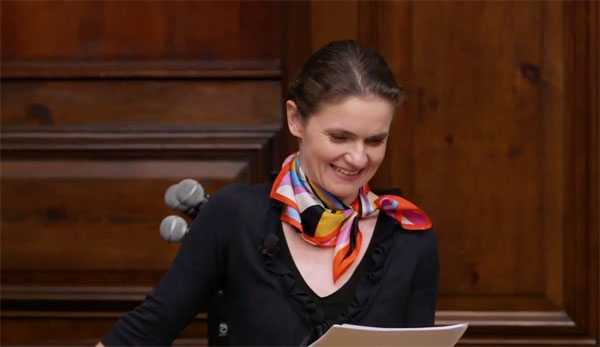FILMS
Welcome to Centro Primo Levi’s video page. Here you can find a selection of video clips and movies about the history of Italian Jews, recordings of many of our programs and seminars, and a link to CPL minidocs, a series of short web documentaries designed as introductions to some of our books.
CPL Mini-Docs
Song of the Sea
In “The Song of the Sea,” musician and author Enrico Fink guides us through the Great Synagogue of Florence
I am Counting on You, on Everyone
“I Am Counting on You, on Everyone” juxtaposes the letters written by Gemma Vitale Servadio before she was killed in Auschwitz with present-day images
Americordo
In “Americordo,” journalist and author Gianna Pontecorboli discusses her book about Italian Jews who migrated to the United States fleeing persecution at home under Mussolini.
Money Must Stay in the Family
Alain Elkann reflects on his novel “Money Must Stay in the Family” and the source material that inspired him to write it: his own family history
Mini-Docs (extra content)
Song of the Sea, Enrico Fink
In “The Song of the Sea,” musician and author Enrico Fink guides us through the Great Synagogue of Florence
Song of the Sea, Rav Alberto Funaro
In “The Song of the Sea,” musician and author Enrico Fink guides us through the Great Synagogue of Florence
Song of the Sea, Prof. David Megnagi
In “The Song of the Sea,” musician and author Enrico Fink guides us through the Great Synagogue of Florence
I Am Counting on You, on Everyone… Extra on Gemma Servadio
“I Am Counting on You, on Everyone” juxtaposes the letters written by Gemma Vitale Servadio before she was killed in Auschwitz with present-day images
Americordo, Extra Judge Guido Calabresi
In “Americordo,” journalist and author Gianna Pontecorboli discusses her book about Italian Jews who migrated to the United States fleeing persecution at home under Mussolini.
Money Must Stay in the Family, Alain Elkann
Alain Elkann reflects on his novel “Money Must Stay in the Family” and the source material that inspired him to write it: his own family history
Money Must Stay in the Family, The Ovazza Family Films
Alain Elkann reflects on his novel “Money Must Stay in the Family” and the source material that inspired him to write it: his own family history
Primo Levi
Primo Levi at the National Book Festival
Multimedia artist Cynthia Madansky produced this short film in tribute to Primo Levi as an introduction to the program at the National Book
Il sesto giorno
After much debate over how to design the human, a committee ends up implementing a design dictated by “management”. “Storie naturali, of which this text is part, provide another
La bella addormentata nel frigo
A young woman subjects herself to voluntary freezing to be awaken only to witness landmark events. “Through surreal inventions, Levi pointed
Il Versificatore
In Il Versificatore, an American salesman, Simpson, presents the versifier as an automated solution to a poet’s rising work levels, setting in
Carbonio
Reading. John Turturro and Joan Acocella. Levi talks about his fascination with knowledge, the discovery of the world, and the secrets of matter.
Procacciatori d’affari
In Procacciatori d’affari, where some bureaucrats try to convince souls to enter in living bodies, as human being has inexplicable defects: “I think you
Primo Levi at 100 – Pankaj Mishra on “The Drowned and the Saved”
This lecture inaugurates a series of programs to mark Primo Levi’s Hundredth Anniversary held at various venues in town, including the New York
The Mark of the Chemist
Primo Levi is one of the best-known 20th century Italian writers, with over twelve million copies of his works sold in 24 languages. His unique blend of humanistic vision and scientific thought
Affection and Survival: Primo Levi at 100
Affection is a lesser known aspect of the human and Jewish experience in the camps. Mostly it is related to the fractured past of which the camp is the present.
Ian Thomson: Writing About Levi
Author Ian Thomson presents the new edition of his classic biography of Primo Levi. Casa Italiana Zerilli-Marimò New York University November 19, 2019. […] Although I had met and spoken to Primo Levi shortly before he died,
Levi was not simply a witness to contemporary barbarism. By profession he was an industrial chemist. His hybrid career as chemist and writer – and the tensions between the two – forms a significant part of my biography. Levi’s literary-chemical memoir The Periodic Table, first published in Italy in 1975, attracted to his work new scientific readers appearing at a time when authors with a scientific leaning were not published as frequently as they are today. Long before Carlo Rovelli or Oliver Sacks or Stephen Jay Gould, Levi had sought to make science accessible to the layperson. The Periodic Table, where elements of Levi’s life are explored through the medium of chemistry, is revered today by a generation of younger scientific writers, among them Siddartha Mukherjee, whose award-winning history of cancer, The Emperor of All Maladies (2011), is profoundly indebted to Levi as it cuts across the ‘two cultures’ of science and the humanities with humility and intelligent generosity.
Primo Levi on Poetry
André Naffis-Sahely in conversation with Jonathan Galassi. Jonathan Galassi, novelist, publisher and distinguished translator of Giacomo Leopardi and
To Be or Not: Considering Primo Levi’s Death
Uri Cohen (Tel Aviv University). We will never know what exactly took place thirty years ago when Primo Levi
Culture
Opening at Vanni’s: 130 Years After
Centro Primo Levi launched CPL Editions at SF Vanni, historical Village bookstore and publisher, symbol of independent publishing that has flourished in Italy for centuries, often bringing together the Jewish and non-Jewish world.
Israeli Radio on Italian Jewish Music
Avraham Soltes talks about Jewish liturgical and secular music in Italy tracing the history of the Italian Jewish communities from antiquity to the present.
The Italian Synagogue in Jerusalem
The Italian synagogue in Jerusalem was originally the synagogue of Conegliano Veneto, a small town located between Padua and Venice.
Italian Chazanut
Yafuzu Oyevecha (And it came to pass, when the Ark set forward, that Moses said, rise up, Lord, and let your enemies be scattered) is sung on Shabbat
Rabbi Elio Toaff
Elio Toaff (30 April, 1915 – 19 April, 2015) was the Chief Rabbi of Rome from 1951 to 2002. He served as a rabbi in Venice from 1947,
Rabbi Dario Disegni
“Rabbi Dario Disegni, a 20th-Century Story”, produced by the Archivio Terracini of Turin. Born in Florence, Rabbi Dario Disegni (1878-1967),
Los Corassones Avlan
New York, NY – September 24, 2019 – A fully immersive experience celebrating and exploring the lives of the Jews of Rhodes, the multimedia installation “Los Corassones Avlan” (The Hearts Speak, from a Sephardi saying).
Fascism and the Shoah
Fascist Italy and the Jews
Dr. Iael Nidam-Orvieto, the Editor-in-Chief of Yad Vashem Publications discusses the topic of: “Fascist Italy and the Jews: myth versus reality”.
This is the first part of this talk, for the second part click here. The video is part of the series Insights and Perspectives from Holocaust Researchers and Historians” supported by the Claims Conference.
Il Ragazzo di Via Sacchi, Emanuele Artom
Emanuele Artom was a young anti-Fascist raised in Turin who joined the Resistance in the “Giustizia e Libertà“
The Rosselli Case
Paris, 19th June 1937. A funeral cortege of 150,000 people accompanies the caskets of Carlo and Nello Rosselli, Italian anti-fascists in exile,
Ferramonti: The Largest Concentration Camp in Italy
“Children imprisoned behind barbed wire! Here is one of the typical symptoms of this heroic age of ours. Some of these kids were born in
The DP Camp of Cinecittà
On June 6th 1944, the “City of Cinema” was taken over by the Allied Control Commission, as a holding station meant to house thousands of refugees. The partially bombed modernist movie
Memoria
A film by Ruggero Gabbai, Liliana Picciotto and Marcello Pezzetti. “Memoria”, regia di Ruggero Gabbai. “Memoria” presented for the first time the testimonies of Italian survivors
Giorno della Memoria, 2023. New York
On this day, the collective awareness of this past is becoming blurred or mythologized, ideologies of violence and prevarication are reappearing with vengeance, emerging from societies in which inequality, competition, suprematism, and conflict shape consciences.
After Images: The Massacre of the Mazzetti Family (August 1944)
The photographer Eva Krampen Kosloski, grew up knowing only the outlines of the following story. It is a story that belonged to her mother and aunt – the twins Paola and Lorenza Mazzetti –
Kosloski employed photography to recompose those memories, to rediscover roots, stories, landscapes, and unexpressed emotions. She weaves a poetic narration, where past and present flow smoothly in the intimate exchange between three women, mediated by the photographic lens.
Giorno Della Memoria 2024- Consulte general of Italy
Reading of the names of the Jews deported from Italy and the territories under Italian rule. The ceremony is held each year in front of the Italian Consulate and everyone is invited to join and read.
Giorno della Memoria (Remembrance Day) commemorates the day of 1945 in which Auschwitz was liberated by the Soviet Army. European countries and the UN mark this day with programs and ceremonies to create public awareness of the past, foster civil dialogue, and counter racism, intolerance, and xenophobia in today’s societies.
Books and conversations
Virtual book launch and conversation: Reluctant Jews by Sandro Gerbi
Rather than going in search of his Jewish roots, Sandro Gerbi focuses on the reverse process: the gradual secularization of his family during the twentieth century,
Virtual book launch and conversation: The Guardians of Memory by Valentina Pisanty
Valentina Pisanty’s The Guardians of Memory opens with a paradox and a question. The paradox derives from an empirical observation: that the very post-Cold War
Virtual book launch and conversation: Family Papers by Sarah Stein
Sarah Stein in conversation with Aron Rodrigue on her new book Family Papers: A Sephardic Journey Through the Twentieth Century (Farrar, Straus and Giroux).
Virtual book launch and conversation: Another Modernity by Clémence Boulouque
Clémence Boulouque (Columbia University) in conversation with Jessica M. Marglin (University of Southern California). Another Modernity is a rich study of the life
Elsa Morante, “La Storia”
Reading and panel discussion on Elsa Morante’s La Storia. In Italian with English translation. Featuring Giorgio Montefoschi, Angela Borghesi. Reading by Olek Mincer.
Organized by Centro Primo Levi and the Italian Cultural Institute on the 80th anniversary of the promulgation of the Racial Laws and the 75th anniversary of the deportation of the Jews of Rome.
The Heart of a Stranger
The Heart of a Stranger charts the history of our world’s civilizations through the prism of exile, taking the reader from Ancient Egypt to the present day through three hundred pages of poetry, fiction, and nonfiction.
Power and the Messiah
Zvi Ben-Dor Benite and Uri S. Cohen. A conversation among authors, scholars, and sages about history, power, and the Messiah. Starting with Walter Benjamin’s distinction between “weak” and “strong” messianic forces and history, this program presents three Italy-related stories.
Mine is the Golden Tongue
New York Public Library, presented in collaboration with casa Italiana Zerilli Marimò
The Hebrew Sonnets of Immanuel of Rome. Translated by Yehudah Cohn, CPL Editions, 2023. Staged reading by acclaimed actor Ronald Guttman and scholar of Hebrew literature Fabrizio Lelli. A satirist, poet, and biblical commentator, Immanuel ben Shelomò or Manoello Giudeo, was a contemporary of Dante, who, recounting his ultramundane flight through Hell and Paradise in Hebrew, tied his name forever to that of the Florentine poet. He moved swiftly between vernacular and Hebrew, modeled his verses on the Arabic maqāma, and wrote the first known sonnets in Hebrew. He lived in Rome during the turbulent period following the communal experience, during which the popes were mostly absent. His mark on the Roman siddur suggests he was an active member of the local Jewish community, one that left no other trace but an extraordinary abundance of Hebrew manuscripts, translations, commentaries, philosophical and literary works. Immanuel’s writings and life have fascinated scholars for over six centuries, making him one of the most studied Hebrew writers in history; yet, in the world of mass culture, he has remained practically unknown. His most published and studied book, the Mahbarot, a collection of satirical tales written in Hebrew foreshadowing Boccaccio’s Decameron, has never been translated as a whole. Scholars’ widely diverging readings have cast mystery on his persona and the world surrounding him. Centro Primo Levi’s publication makes all of Immanuel’s Hebrew sonnets available in English for the first time.
Exile and Creativity
Franco Modigliani
Following the proclamation of the racial laws in Italy, in 1938, Modigliani left Italy for Paris together with his future wife, Serena Calabi and her parents. After briefly returning to Rome
Le Due Amelie
The two Amelia Rosselli whose lives and work will be discussed and celebrated, were respectively, the mother and the daughter of the anti-Fascist leader Carlo Rosselli, founder of one of the earliest antifascist movements,
Gli Artisti
With Giuliana Altea and Raffaele Bedarida. Costantino Nivola and Corrado Cagli came from very different backgrounds. Nivola, from rural Sardinia, was the son of a mason,
Exile and Creativity, published by CPL Editions, is a collection of essays from a program series held in 2017-18 by the Italian Cultural Institute in New York jointly with Centro Primo Levi. The programs examine the lives of Italian man and women who were forced or chose exile during the Fascist era. Whereas the narratives of exile tend to focus on the experience of disorientation and loss, as the curator of the series, Giorgio Van Straten states in the introduction, exile is “also something found: an opportunity, a new culture capable of sparking unexpected, unforeseen developments along one’s path through life and, therefore, the possible enrichment of one’s humanistic and cultural heritage”.
Paolo Milano e Renato Poggioli
An evening dedicated to Paolo Milano and Renato Poggioli, two Italian intellectuals instrumental in the development of a cultural dialogue between Italy and the United States,
Exile and Creativity, published by CPL Editions, is a collection of essays from a program series held in 2017-18 by the Italian Cultural Institute in New York jointly with Centro Primo Levi. The programs examine the lives of Italian man and women who were forced or chose exile during the Fascist era. Whereas the narratives of exile tend to focus on the experience of disorientation and loss, as the curator of the series, Giorgio Van Straten states in the introduction, exile is “also something found: an opportunity, a new culture capable of sparking unexpected, unforeseen developments along one’s path through life and, therefore, the possible enrichment of one’s humanistic and cultural heritage”. ?
Carlo Ginzburg and Saul Friedlander
A practice of reflection inaugurated by the Greeks has allowed us to discover what image, name, and myth, despite their diversity have in common:
Carlo Ginzburg (April 15, 1939 – Turin, Italy) is a noted Italian historian, the son of Natalia Ginzburg, a novelist, and Leone Ginzburg, a philologist, historian, and literary critic. Ginzburg received a PhD from the University of Pisa in 1961. He subsequently held teaching positions at the University of Bologna, at the University of California, Los Angeles (1988–2006), and st the Scuola Normale Superiore in Pisa. His fields of interest range from the Italian Renaissance to early modern European history, with contributions to art history, literary studies, and the theory of historiography. He is best known for Il Formaggio e i Vermi – The Cheese and the Worms (1976), which examines the beliefs of Menocchio, a 16th century miller twice undergoing trial by the Roman Inquisition. In this book, Ginzburg highlights, on the basis of an analysis of the trial’s papers, the different aspects of the surprisingly varied universe of Menocchio’s cultural, philosophical, political and religious orientations, only to a small extent due to the influence of a “higher” culture. In 1966, he published The Night Battles, an examination of the benandanti’s visionary folk tradition found in sixteenth- and seventeenth-century Friuli in northeastern Italy. He returned to looking at the visionary traditions of early modern Europe for his 1989 book Ecstasies: Deciphering the Witches’ Sabbath. In the eighties he directed the “Microstorie” series published by Einaudi, with Giovanni Levi. He is part of the scientific council of the magazine Communications. He is Academic Correspondent of the Academy of Arts of Drawing, in Florence, and honorary member of the American Academy of Arts and Sciences. He received the Prix Aby Warburg in 1992 and, in 2005, the Feltrinelli Prize of the Accademia dei Lincei, for Historical Sciences. From the Accademia dei Lincei, in 2010, he was awarded the Balzan Prize. His books are translated into more than twenty languages.
Saul Friedländer (October 11, 1932) is an Israeli/American historian and currently Professor Emeritus of History at UCLA. From 1953-55, he studied Political Science in Paris; in 1963, he received a PhD from the Graduate Institute of International Studies in Geneva, where he taught until 1988. Friedländer also taught at the Hebrew University of Jerusalem and at Tel Aviv University. In 1969 he wrote a biography of Kurt Gerstein. Since 1988 he has been Professor of History at the University of California, Los Angeles. He is considered one of the world’s premier historians in the field of the Holocaust, and the author of the definitive book Nazi-Germany and the Jews 1933-1945, thst has transformed our understanding of this period by weaving into a coherent whole the perspectives of ordinary Germans, party activists, military and political figures, and, most importantly, victims and survivors. Drawing from documents, films, recollections, and his personal experience, he reconstructs these events with a judicious tone that defies the nature of the subject and demonstrates the interplay of memory and representation in the interpretation of historic events. Friedländer shows that a rational and many-sided reinterpretation of the evidence deepens a reader’s understanding of the nature, meaning, and complexity of the Holocaust. His works include Pius XII and the Third Reich, (1965), History and Psychoanalysis (1979), When Memory Comes (1979), Reflections on Nazism (1984), Nazi Germany and the Jews, Volume One: The Years of Persecution, 1933-1939 (1997), and Nazi Germany and the Jews, Volume Two: The Years of Extermination, 1939-1945 (2008).
Arturo Toscanini
A conversation between James Conlon and Harvey Sachs. Born in 1867 in Parma, Italy, Toscanini debuted very young on the international scene and, already in 1898, received important appointments at La Scala first and,
Toscanini was staunchly opposed to the growth of fascism in Europe. In Italy in 1931, he was attacked for refusing to play the fascist anthem. Toscanini had been the first non-German to conduct at the Wagner festival in Bayreuth, Germany, but he opted not to attend the festival in 1933 due to the Nazi regime. In 1936, Toscanini traveled to Palestine to conduct a group of Jewish musicians who had fled Europe.
Andrea Viterbi: Reflections of an Educator
Presentation of Andrea Viterbi’s memoir Reflections of an Educator, Researcher and Entrepreneur. Dedicated to the memory of both his father Achille and his son Alexander,
Attuned to the post-war growing technological needs of government and population, Viterbi and his colleagues began to work in an area where scientific research and capitalistic enterprise could support one another. His main contribution to science, the Viterbi Algorithm, found application in different fields, ultimately leading up to the co-founding of Qualcomm, which became one of the most important communication companies worldwide.
His father came from an intellectual but impoverished youth, and imbued family life with the principles of education and social responsibility. Family politics in America were very much in tune with the Democratic party of Franklin Roosevelt, who had favored the poor over the wealthy in raising the nation out of the Depression.
Enrico Fermi
A conversation with David N. Schwartz, author of the book: The Last Man Who Knew Everything. Albert Einstein once remarked that he had sold himself body
That loss precipitated an intense lifelong privacy and a personal and scientific strategy of quantifying the world. Fermi wielded a six-inch slide rule as we today wield our iPhones, to plumb the essence of events. He ranks high in the second tier of 20th-century physicists, behind figures like Einstein and the Danish theoretician Niels Bohr. There have been other accounts of his life, yet David N. Schwartz’s new portrait, “The Last Man Who Knew Everything,” is the first thorough biography to be published since Fermi’s death 64 years ago in 1954.
The Triumph of Bacchus and Ariadne
Presented by the Center for Italian Modern Art and Casa Italiana Zerilli Marimò.
Bruno Walter Auditorium. The Library for the Performing Arts, Lincoln Center, 111 Amsterdam Avenue.
The score of The Triumph of Bacchus and Ariadne will be presented in its entirety for the first time since 1948. Cantori New York directed by Mark Shapiro will perform Vittorio Rieti’s music for the Magnifico. In 1948, the New York City Ballet presented The Triumph of Bacchus and Ariadne, a Renaissance poem by Lorenzo de’ Medici whose refrain “del doman non v’è certezza” (future holds no certainty) resonated with the experience of displacement in the immediate aftermath of World War II.
Behind the project was the painter, set designer and cultural organizer, Corrado Cagli. Echoed in this performance are his reckoning with his life in fascist Italy, the catastrophe of the war, and the mass murder of the Jews. Cagli’s first exhibition in New York since 1937 is on view at CIMA through January 26. The exhibition’s curator Raffaele Bedarida will give a brief overview on the history of the piece and Cagli’s work.
S. F. Vanni
Rediscovering S.F. Vanni (2015)
Mini-doc on the historic Italian publisher and bookstore S.F. Vanni and its renovation by Centro Primo Levi, featuring an interview with Alessandro Cassin, CPL’s director who pieced together
Centro Primo Levi Opening at S.F. Vanni
A 130 year old bookstore re-opens in the Village. S.F. VANNI, the first Italian bookstore in America, in business from 1884 to 2004,
The tradition of Italian books in New York begins with Mozart’s librettist Lorenzo Da Ponte, who first brought Italian books to NY in 1805. S.F. VANNI, opened the store (at 548 West Broadway) at the end of the 19th century; bookseller and publisher Andrea Ragusa, brought it into the 20th century on Bleecker Street and then to its present address.
Now, CPL EDITIONS– Centro Primo Levi’s e-book and print-on-demand publishing venture—a niche independent publishing initiative dedicated to the history of Italian Jews- will operate out of S.F. VANNI, in 21st century America.
For decades, thousands of dusty Italian books sat on metal shelves in the two rooms beyond the old-fashioned pale blue curtains of S.F.VANNI’s storefront. Revisited with advice from architect Bonnie Roche and designer Jonathan Wajskol, the first room has become a multifunctional space for book presentations, lectures, and film screenings. The second room —with the original books sold and published by S.F. VANNI, many of them rare editions, will be preserved as ‘urban archeology’. Board member Stella Levi imagines it as something between a beit midrash and a salon, a living space where a variety of events will take place. CPL’s director Alessandro Cassin envisions it as tribute to a long tradition of Italian and Jewish family-based publishers that strongly impacted the surrounding culture.
Andrea Ragusa, bookseller and publisher, arrived in the US in 1931, on a mission: to sell the newly compiled Italian Encyclopedia (Enciclopedia Italiana Treccani), and create —through books— a bridge between Italy and the United States. Within a decade his bookstore became the main supplier of Italian books and periodicals, not only to New York City, but also to libraries and universities throughout the United States and Canada.
Rome Lab / Iom Romì
The Rome Lab
With the Rome Lab series Centro Primo Levi invites the public to explore periods of Jewish history and perspectives that, in spite of their formative role up to the early modern period,
Iom Romì
“Iom Romì” (A day in Rome) chronicles a day in the life of the contemporary Jewish community of Rome, which for centuries has lived in limbo between persecution and integration.
Iom Romì: Taxi Karaoke (outtake #1)
“Iom Romì” (A day in Rome) chronicles a day in the life of the contemporary Jewish community of Rome, which for centuries has lived in limbo between persecution and integration.
Seminar in Italian Jewish Studies
After Mussolini: The Reintegration of Italian Jews in Post-War Italy
Gary Schwarz (University of Pisa)
In recent years the history of European Jewry in the aftermath of racial persecutions has been the object of several studies.
Beyond National Mythology
Susan Zuccotti (author of The Italians and the Holocaust), Federico Finkelstein (The New School), Respondent Franklin Hugh Adler (Macalester College)
Why does publication of these massive volumes signify a turning point?
The Pope and Mussolini
David Kertzer (Brown University), Ruth Ben-Ghiat (New York University), Robert Maryks (Journal of Jesuit Studies & Series of Jesuit Studies, Editor-in-Chief), Mark Weitzman (Simon Wiesenthal Center).
The Pope and Mussolini tells the story of two men who came to power in 1922,
Of the Jewish Race: Race, Law and Identity in Fascist Italy
Ariela Gross (University of Southern California), David Kertzer (Brown University), Michael Livingston (Rutgers University). Introduced and moderated by Ruth Ben Ghiat (New York University).
The legal approach is novel to the historical discourse on this time period, which has previously focused on political and social perspectives. Livingston writes in the book: “As compared to Hitler’s Germany or Stalin’s Russia, Fascist Italy offered at least a limited amount of independence to judges and lawyers, and a courageous few used this independence to ameliorate or limit the damage resulting from the laws. But many others expanded them and, by providing technical assistance in drafting and interpreting the Race Laws, lawyers were indispensable in making the laws effective.
The Lateran Pacts
Francesco Margiotta Broglio (University of Florence), Giorgio Fabre (independent scholar), Elena Mazzini (University of Florence), Ilaria Pavan (Scuola Normale Superiore–Pisa) and Michele Sarfatti (CDEC), David Kertzer (Brown University),
The Lateran Pacts were the first of a series of concordats the Vatican signed with European totalitarian regimes: it was followed by the Reichskonkordat with Hitler’s Germany in 1933. The Pacts deeply affected many aspects of Italian society and changed the ethical parameters that had shaped social welfare, scientific research, medical practice and the Italian education system up to that moment. They also impacted family law and the penal and civil codes. Most significantly, the Lateran Pacts restricted the status of religious minorities, which at the time were primarily the Jews and the Valdesians. Italian Jews had participated at all levels in the process of unification of the country. The creation of the liberal state between 1861 and 1870 had forever abolished ghettos and established the equality of all citizens. Since the early 20th century, Jews had held high positions in Italian public life, with a disproportionate representation in Parliament – two prime ministers and many prominent exponents not only in politics, but in academia, science and the arts.
Père Marie Benoît and the Rescue of Jews in World War II
Susan Zuccotti
Susan Zuccotti narrates the life and work of Père Marie-Benoît, a courageous French Capuchin priest who risked everything to hide Jews in France and Italy during the Holocaust.
Science and Dystopia: Primo Levi on Science Fiction
Extermination camps were the ground where a vast number of new medical and scientific applications were first tried out. The compliance and actual participation of the industrial complex
In his testimony as a survivor, in the “necessity” that moved him to become a writer, in his ethic need to say, to make known, Primo Levi has transmitted the devastating effects of this de-subjectivising experience, and has given an extraordinarily human voice to that which is inhuman and unsayable.
Reflecting upon the causes and the implications of this “ immense biological and social experience,” as he defines it, Levi, the story teller, ponders on the issue of segregation in our own times, on the heritage the camps have bequeathed on the present, establishing a disquieting continuity between past aberrations and present normality, showing beyond any doubt how the present is subtly interwoven by the logic of the past.
In his hallucinated fiction, and, specifically, in his play La bella addormentata nel frigo (Sleeping Beauty in the Fridge), Levi shows with great acumen and perspicacity the strict relationship between science, new technologies, and subjective alienation, as well as the ways in which normality, the tranquility of a prosperous life, are in fact the product of a bio-political normativity, universally accepted with careless complicity. As a reminder of our own situation, Levi writes: “Monsters do exist but are too few to be really dangerous; by far more dangerous are common men, executives always ready to believe and obey without ever questioning what they are told.”
Film Screening: Sleeping Beauty in the Fridge, 1979, a rare fiction short, is based on Levi’s story with the same title and produced by the Italian television in collaboration with the author. In Italian w/English subtitles (16’). Paola Mieli (psychoanalyst, New York, Paris) on Sleeping Beauty in the Fridge, Gérard Haddad (psychoanalyst, Paris) on The Mirror’s Maker, and Daniela Schiller (neuroscientist, Mount Sinai, NY) on a story to be announced.
Beyond the Ghetto
Marina Caffiero (University of Rome La Sapienza) and Serena Di Nepi (University of Rome La Sapienza). The history of the Jews and that of the Christians is one of institutional, social and cultural
Cross-analysis of the data in administrative, notarial and criminal records, with data found in the laws, rules and treatises highlight the need to include a full history of the Jews in the overall history of Europe. Thus the history of the Jews finds its place as an integral and fundamental part in the European transformational processes offering insight into historical phenomena of general interest such as the definition of heresy, the hunt for banned books, the interpretation of witchcraft, sexual exchanges, the construction of the “lexicon of injury”, discrimination, the discourse on rights and citizenship, the development of international trade and cross-cultural exchanges, etc.
During the modern era, between the sixteenth and eighteenth centuries, Italian society was less closed than we usually think, and the Jews (with their culture, their books and their representatives) had their place within it, despite strict rules and the recurring anti-Jewish propaganda. The history of the Jews and their historical relations with Christians is a central chapter of the history of Italy and an extremely relevant one today, in view of the challenges posed by the coexistence of different religions and cultures and the problems regarding the way a society relates to minorities.
Within this interpretative framework, Marina Caffiero will discuss the relationships and exchanges – cultural, social and institutional – between the Jewish minority and the Christian majority. Although the Jews were viewed as “different”, thus dangerous to the established religious and secular powers, they participated in most aspects of daily life in the Italian cities of the time. Caffiero’s argument, grounded in the comparison between the evolution of legislation regarding the Jews and newly found inquisitorial documents, points to a significant gap between the rules governing Jewish lives and their actual impact on peoples lives. Despite severe restrictions, Jews and Christians often found places and times for ongoing discussion and cross contamination. In other words, Italian society during the modern era was characterized by a far greater freedom and open mindedness than its own rules and prohibitions suggest.
Serena Di Nepi’s work focuses on the years immediately before and after the establishment of the ghettos commissioned by Pope Paul IV Carafa (1555). Starting with an analysis of the political and religious climate in Rome at the time of the arrival of Jewish refugees from Spain in 1493, and the protection accorded to them by an Iberian Pope, Alexander VI Borgia, Di Nepi traces the steps that led to cultural and ideological changes during the first half of the sixteenth century, leading to the Church’s policy of accepting the Jews, but segregating them while awaiting for their conversion. The alternative to the ghetto was the expulsion of the Jews, a possibility which was in fact examined and discarded. Ultimately it was decided to force them into a cloistered existence, following the 1513 Libellus of Querini and Giustiniani. Through a detailed examination of Jewish and Christian documents, it is possible to draw a picture of the Jewish condition in Rome immediately before the erection of the ghetto and in the following decades. In doing so, questions arise concerning the Jews’ survival strategies and the ways in which despite everything, they were able to endure more than three centuries of imprisonment and aggressive proselytism. Further, Di Nepi will highlight the key role of the rabbinate in the management of Jewish institutions and communal life, drawing on parallelisms between the Rabbinate’s attempts to discipline and confessionalize and similar intents well documented within the Christian world.
Unrecovered Memory: The Jewish Communal Library of Rome
On September 30th and October 1st 1943, two German officers visited the building of the Jewish Community of Rome.
For the first time since the early investigations, this panel will inaugurate the study of the content and history of the library, as it emerges through the registers of Inquisition censorship, community chronicles and other historical sources dating back to the 15th century.
The officers examined the books. On October 11th they returned to announce that the libraries would be seized. Two days later the EinsatzstabReichsleiter Rosenberg, the German agency in charge of seizing Jewish books and art, sacked the building and took both libraries. The two libraries were allegedly transferred to Germany aboard three trains: two in October and a third one in December.
In 1946, the Allies located the Rabbinical library near Frankfurt and facilitated its return to Rome in 1950. No trace was ever found of the Jewish communal library of Rome. Although various investigations were conducted, the last as part of the Anselmi Commission on the confiscation of Jewish assets in 1999-2001, its fate remains obscure. Over the years, hypotheses multiplied and at least few volumes emerged in Holland and at the JTS library in New York. Information and testimonies concerning its departure remain vague, research incomplete and many questions are still open. A panel of experts will analyze the history of the investigations and discuss future efforts to recover this treasure.
Speakers : Serena Di Nepi, University of Rome La Sapienza and Jewish Museum of Rome, Agnes Peresztegi, Commission for Art Recovery, Alex Karn, Colgate University. Moderated by Natalia Indrimi, Centro Primo Levi.
Americordo: The Italian Jewish Exiles in America
Book presentation: Americordo. The Italian Jewish Exiles in America by Gianna Pontecorboli
Guest speaker: Judge Guido Calabresi. Pontecorboli’s book is a long
Pontecorboli retraces the threads of their stories, personal recollections and historical background, their strategies to exit Italy and those to find a visa to the US. She reconstructs their first steps in the New World, their networks of mutual support, their successes and drawbacks, their encounters with fascism and antifascism in America, their different and at times conflicting choices of adaptation and survival.
Written in a fast paced journalistic style, the book is both a good read as well as an important contribution to cultural history, marking a starting point for a whole new field of inquiry.
Among the protagonists of the book are Tullia Calabi e Bruno Zevi, Max Ascoli, Giorgio Cavaglieri, Achille Viterbi, Amelia Rosselli, Silvano Arieti, Emilio Segré, Franco Modigliani, Paolo Milano, Salvador Luria, Massimo Calabresi, Ugo Fano and Giorgio Levi della Vida. Probably the smallest national group among European exiles, the Italians distinguished themselves for their willingness and ability to create from the start bridges between Italy and their new country.
Some took part in the liberation of Europe from the Nazi-Fascist dictatorships, working with the US armed forces, others focused on Italian life in America. After the war, some chose to remain, while many returned to Italy. Four of those who remained in America won the Nobel Prize. The experience of exile originated important postwar cultural and economic trends. All too often however, the violence and injustice that had caused the exile was forgotten. The book traces the personal stories of men, women and their families who became an unlikely bridge not only between two countries, but between two eras.
The English edition, with its extensive bibliography, ample notes, and biographical sketches of the individuals mentioned in the text constitutes a substantial reference point for future scholarly research.
Fascism and Italian American Culture
Ruth Ben Ghiat (New York University), Fraser Ottanelli (University of South Florida), Matteo Pretelli (New York University and Middlebury College, Florence),
In the past two decades, with a large amount of primary sources still untapped, research has began to investigate the modalities through which Fascism sought to control Italians abroad and, through them, maintain relations with countries that were not under totalitarian rule.
Italian Americans’ self-images during those years were shaped by propaganda, foreign press reports, economic interests, and the establishment of the Fascist League of North America on the one hand, and by the Regime’s cultural and educational showcases along with a network of local police informants, on the other.
Fascism, however, was forced to adapt its methods to the requirements and style of the American society and values producing ambiguous cultural and political categories that continued to operate after Mussolini’s fall and the end of World War II.
How did the Italian American community and their leadership negotiate their position and role within the larger horizon of the relations between the US and Italy and the US and the Catholic Church? How did ethnic leaders and intellectuals of Italian background interpret the relation between dictatorship and democracy within the Italian communities in the US? To what extent were Italian American radicals also antifascists? How did they respond to Fascism and what relations did they develop with the mainstream Italian American population, by and large supportive of Fascism, and with various factions of Italian antifascist in exile?
The study of Italian American history, politics and culture during the Fascist Regime provides an important dimension to better understand Italian Fascism. It also contributes important sources for research topics that are crucial part of Centro Primo Levi’s ongoing activities, such as the story of the Italian Jewish exiles in America and the role of the Italian press, publishing and cultural propaganda in the US. The discussion opened by this seminar will continue in future sessions addressing more specific issues about antisemitism in the US, the Italian Jewish exiles in America and the transition to the post-war period.
As many as 2,000 Jewish exiles arrived in the US in the wake of the Racial Laws. To what degree did anti-Semitism resonate among Italian Americans whose relation with Jews had been defined by the immigrant experience and, for some, by common activism in the unions? What does this Italian-American story add to our reading of the development of racial policies in Italy and of the arrival of the Italian Jewish exiles in America?
This seminar is a first step toward addressing these questions by analyzing some aspects of Fascist outreach in America, its reception and consequences.
Honoring War Criminals: The Monument to Rodolfo Graziani
Lidia Santarelli (Brown University), Yemane Demissie (New York University). Moderator: Andrea Fiano (journalist and former Chairman of CPL).
He was notorious as Benito Mussolini’s military commander in the colonial wars in Ethiopia and Libya, where he carried out massacres and used chemical weapons against the local population. [BBC News, www.bbc.co.uk/news/world-europe-19267099].
Associations including ANED (Italian Association of Deportees), ANPI (Association of Resistance Partisans) and UCEI (Union of the Italian Jewish Communities) have made formal requests to remove the mausoleum. This roundtable will discuss Graziani’s role under fascism, rehabilitation attempts of Fascist war leaders in Italy and public opposition to this political trend.
Historian of Italian colonialism Lidia Santarelli will discuss Graziani’s role in Italian colonialist wars in Africa as well as his interventions in domestic politics. The panel will also address the failure of international sanctions and protests against the first use of poison gas against civilians. Ethiopian filmmaker YemaneDemissie will show and comment his documentary work on Ethiopian survivors of the 1937 massacre ordered by Graziani. The program is presented in collaboration with the Global Alliance for Justice – The Ethiopian Cause.
Magnifico in New York
Raffaele Bedarida on Corrado Cagli. In 1948, the New York City Ballet presented The Triumph of Bacchus and Ariadne, a Renaissance poem
Behind the project was the painter, set designer and cultural organizer, Corrado Cagli who captured the irony of this carnivalesque reflection on time and man and called upon Georges Balanchine and Vittorio Rieti to bring it to the stage. The three shared experiences of migration that challenged traditional narratives.
In this Centro Primo Levi’s program conceived for Carnegie Hall’s Migration Festival, Cooper Union’s art historian Raffaele Bedarida (author of Corrado Cagli: La pittura, l’esilio, l’America (Rome: Donzelli, 2018; English edition, New York: CPL Editions, forthcoming) will discuss Cagli’e exile as a significant anomaly in the history of European artists’ forced migration.
Jewish and gay, Cagli had enjoyed a successful career in Fascist Italy during the 1930s. After the 1938 racial laws, he was censored and forced to leave the country. He served in the US army during World War II, participating in the landing in Normandy and the liberation of Buchenwald. With a special status as military artist, he depicted the horror of war in a breathtaking series of drawings that were immediately acquired by MoMA and the Whitney Museum.
In the immediate postwar period, Cagli emerged as an important cultural bridge, helping resume art exchanges between Italy and the United States. Together with other Jewish artists who had fled Italy – Vittorio Rieti, Saul Steinberg, Bruno Zevi – he helped the New York art world rediscover contemporary Italian art and design, and made it possible for emerging American artists to work in Italy.
The program will feature a multimedia display of Cagli’s 1946-47 paintings and drawings for the scenography and costumes of The Triumph of Bacchus and Ariadne (New York Public Library for the Performing Arts) and a live execution of passages from Rieti’s score, which were never performed in public since 1948.
When the American Press Flirted With Fascism
Mauro Canali
American correspondents were baffled by the rise of Mussolini’s movement and had little reference through which to analyze it.
Fascism and Italian American Culture
In the past two decades, with a large amount of primary sources still untapped, research has began to investigate the modalities through which Fascism sought to
Mussolini’s Camps: Civilian Internment in Fascist Italy
Presented here for the first time in English, Capogreco’s research traces Mussolini’s practice of segregation and isolation of political enemies and ethnic undesirables (a constant throughout his dictatorship) back to the colonial
The Babylonian Talmud
The first digitalized Italian translation of the Talmud is certainly a comprehensive and ambitious project. It was achieved through the use of an innovative software called
Museums and the Display of History
The program will explore a specific aspect of European efforts to foster the shaping of a shared historical landscape:
Can museums, traditionally meant as monuments to nationhood, tied to the history and memories of particular locations, effectively display the different lenses through which to see a shared past, divided memories, the developments of an increasingly transnational historical research?
How do they shape their narratives in relation to an unprecedented diversity of audiences; to the lingering effects of a history dominated by nationalism and conflict; to large masses of tourists? Are museums, that increasingly rely on communication technology, virtual reality, and the offer of “adventures”, shaping a new concept of “public history”?
Does the generally stated purpose to carry the “lesson of history” and be relevant to contemporary human tragedies that resonate with those of the Nazi-Fascist past, still hold its meaning in relation to the masses of migrants who do not necessarily share the culture and history nor partake in the privileges of citizenship?
As the place of the Holocaust in European memory is increasingly coming under challenge, elements of fascism are becoming politically and socially acceptable, political events signal the difficulty of democratic nation states to sustain the notion of diversity and equality they produced, the very notion of “history” is confronted on grounds as diverse as communication and the law, can the controversies over history museums provide a lens to discuss the implications and background of the political use of memory and the role of history and historical research in our society?
Participants: Guri Schwarz, University of Pisa, Aline Sierp (University of Maastricht), Jan Grabowski (University of Ottawa), Laure Neumayer, (University Paris 1 Panthéon Sorbonne), Gabor Sonkoly, (Eötvös Loránd University, Budapest), Anna Di Lellio, (The New School), Daniel Levy (Stony Brook University), Mark Weitzman (Simon Wiesenthal Center, IHRA).
Advisory committee: Ruth Ben Ghiat (New York University), Silvana Patriarca (Fordham University), Ernest Ialongo (Hostos Community College) in collaboration with Natalia Indrimi and Alessandro Cassin (Centro Primo Levi).
Redemption Blues
Redemption Blues, a film about the onerous legacy of the Holocaust, begins where conventional Shoah narratives leave off and traces a path forward, exploring redemption through the second generation’s point of view.
What Exactly is a Concentration Camp?
Dramatic reading of Maria Eisenstein’s diary Internee n.6, (1944), one of the earliest testimonies of life in a fascist concentration camp.
Jewish Publishing in Italy
Italy is renowned as the cradle of the printed Hebrew book. Shortly after the invention of the printing press, the first two volumes in Hebrew were printed in Rome and Reggio Calabria approximately between 1472 and 1487.


